

My generator keeps tripping(It’s Causes & Ways to Fix it)
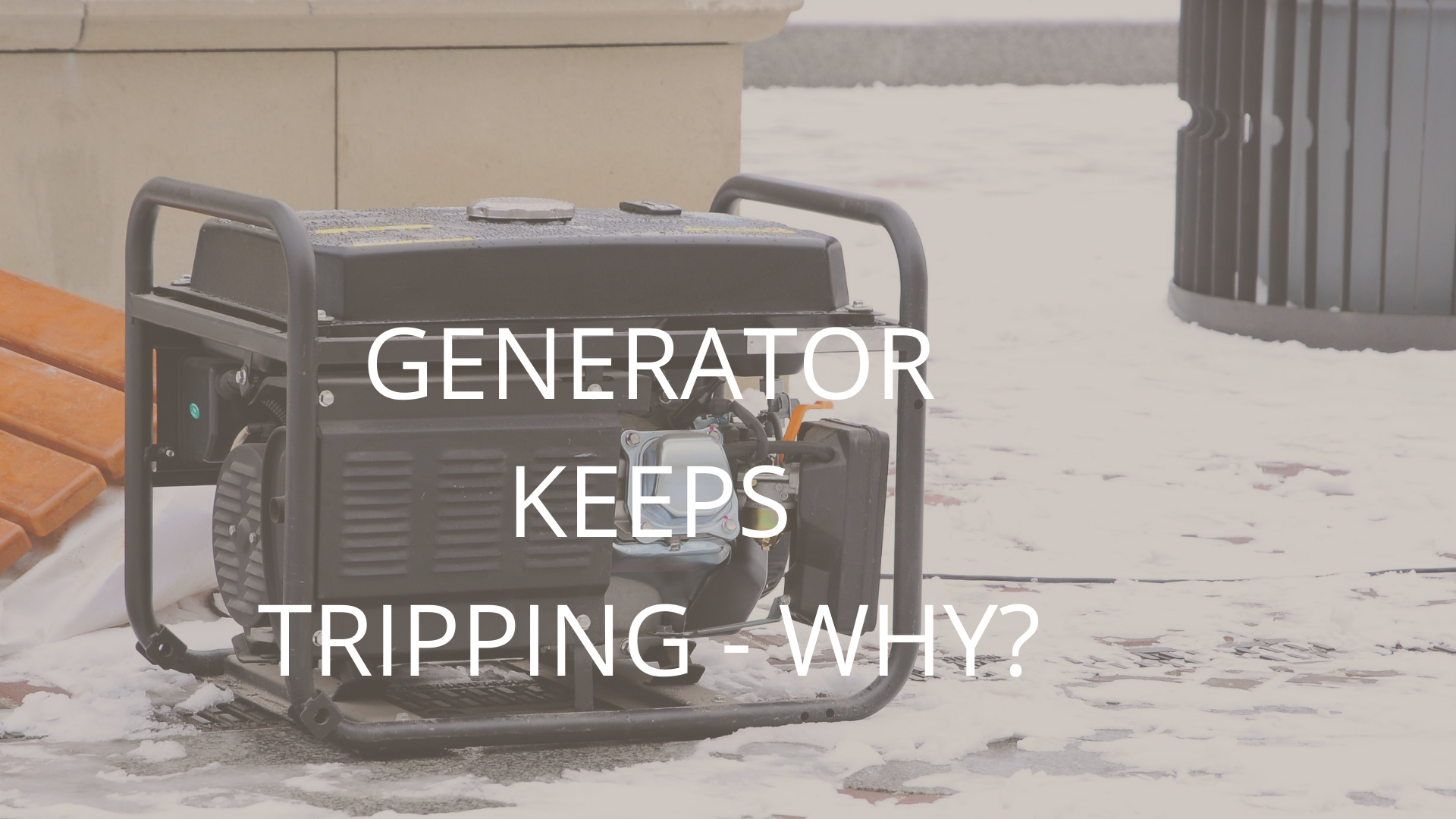
Tripping is basically the word used to describe abrupt disconnection of any electric device when the circuit breaks. Every electric device contains circuit breakers. These help to switch the device off whenever there is a surge in electricity or any other issue that might harm the device or other devices connected to it.
Just like main electric supplies, generators also trip at times unexpectedly. It can be really frustrating when there is no electricity and the generator also trips. In this article, you will learn different reasons why a generator might trip, what you can do to fix it and how to prevent it from happening.
Main Reasons for Tripping
Generally, a generator trips due to either the circuit breaker disrupting the supply or a problem with the Ground Fault Circuit Interrupter (GFCI) receptacles .
Both the circuit breaker and GCFI are used to protect devices from damage, however, they serve slightly different purposes.
All generators contain circuit breakers (and fuses) that trip or disconnect electric supply whenever there is a potential threat for the connected devices. Mostly they are used to deal with the unexpected electric surges and only trip when the electric supply is higher than needed.
In contrast to the circuit breakers, the GFCI receptacles are used to detect any potential leakage of electricity from the device . In other words, they indicate that the electric current is being lost in some unwanted direction instead of following the desired path to the ground.
There can be different causes of electric leakages; these include torn wires, worn insulation, water or moisture, a defective electrical appliance and even contact with the human skin . A GFCI is very important and life-saving equipment that abruptly shuts down the generator to prevent any possibility of electric shock or electrocution. If the GFCI does not work properly, there is a possibility of a fire breaking out.
While both circuit breakers and GFCIs are extremely important, there are times when they start malfunctioning and keep turning the generator off without any valid reason . When that happens, then you will have to check each of them to see where the problem lies.
- Read Surge protector vs GFCI
Quick Ways To Fix It
Finding the fault.
Since there are two main possible causes of a generator tripping, it is important to find out the exact cause and narrow down the problem. It should be noted that all generators do not have GFCI receptacles so the first thing you should do is to find out if your generator has them.
Sometimes, it is possible that both the circuit breaker and GFCI trip at the same time . If it is only the former, then you may need to ensure that you are not putting load beyond the generator’s capacity. However, if i t is only the GFCI that is tripping, then it is a most likely leakage of electric current.
- Read What happens when you run a generator without load
Checking the GFCI Receptacle
In order to check whether the GFCI receptacle is causing the trip or not , you will have to turn off the generator and disconnect all the devices from your generator . After doing so, you have to restart the generator and reset the GFCI receptacle. This is done by simply pressing the “Reset” button. See if the button remains depressed afterwards – if not, then that is an indication that your generator’s GFCI receptacle has stopped functioning and needs to be replaced.
If you find no potential issue with the GFCI receptacle, then you can try connecting a small electrical load, such as a bulb, directly without using any extension cord . Wait for at least 15 seconds to see whether it trips or not. If it does not, then that further suggests that there is nothing wrong with the GCFI receptacle and there might be some other cause of the problem.
Even in the case the bulb trips, do not jump to conclusions before repeating the procedure with a different bulb or some other small load . If every device that you are connecting keeps tripping, then you may need to seek professional help.
Check the Cords
If you use an extension cord to connect your devices, then once you have checked or fixed the GFCI receptacles, you must also examine your cord using the same process . Connect all cords to your generator one by one and also check if there is any dirt or moisture affecting any of them. If the generator trips with any of the cords, then that cord needs to be replaced .
If there is no problem with the GFCI receptacles or the cords, then you may have to check your circuit breaker and get it replaced . In some situations, the generator works for some time and then then the automatic air switch trips a few minutes later, releasing a burning odour.
This is usually the result of insufficient spring pressure or poorly contacted air switch. This increases the contact resistance in the main circuit and hence heats the switch, causing it to trip . To fix this, you should properly clean the switch and get rid of any moisture or dust. Make sure the switch is properly in place.
In some cases, the generator will trip as soon as you connect the load to it. This is usually because either the load is too heavy or there is an external short circuit. For this, you might need professional support to find exactly where that external short circuit is and get it fixed.
Checking the Capacitor
Checking your capacitor is an even more complicated task than checking the GFCI receptacles. Many circuit breakers have a built-in indicator to show that there is an overload and the device has tripped . However, there are times when either there is no indication or the breaker stops working and hence the indicator cannot be trusted.
To confirm that whether it is actually the faulty breaker or something else, you may have to try the same steps and connect different appliances . You can also use a multi-meter to measure the resistance on the lead wire connections that are present inside the panel.
Usually, any readings suggest that the breaker is functioning and the problem is somewhere else. If the reading shows ‘OL’ (overload) or Infinity despite having no appliances connected, then that is an indication that the circuit breaker is malfunctioning and must be replaced.
Check the Wires
Wiring is also very crucial and sometimes damaged wires can also cause the circuit breaker to react and trip the generator. It is better to check on the wires every few days.
Choosing the Right Circuit Breaker
While there is no way, you can control the power surges and unwanted tripping that will happen unexpectedly at times, choosing the right kind of capacitor can make it easy . Here are some things to keep in mind when buying a capacitor.
High Voltage Rating
All capacitors come with a specific voltage rating . A good capacitor is the one which has enough voltage capacity to run the appliances and will not heat up easily. The higher the rating, the better it is.
- Read Why Is My Generator Output Voltage Too Low
Must-Have a High Maximum Interrupting Capacity
Interrupting capacity of a capacitor is basically its potential to deal with the electric surges without getting damaged. T he interrupting capacity of a capacitor should always be high so that it does not stop working when power fluctuates.
Should Deal with High Temperature
A good capacitor should always have the potential to deal with high temperatures whenever a device heats up. Always find out if the capacitor you are buying is recalibrated to the environment you are going to use it in.
Prevent from Corrosion and Moisture
It was mentioned earlier as well that often dust and moisture can result in tripping of the generator . There are some capacitors in the market that are designed to deal with the moisture. When buying a capacitor, keep these properties in mind.
Conclusion
In this article, we have highlighted different issues that might cause the generator to trip. We have also discussed how to check where the problem lies so it can be fixed accordingly.
Moreover, we have also explored some of the qualities that we should seek in a capacitor to prevent everyday problems. The information provided in this article can help people understand why their generator trips. Those who understand electric circuits can benefit from this and use it to fix their generators.
While having knowledge of things is good, it is always better to seek the help of experts in every field. Unless there is an emergency, it is always better to call a professional electrician to deal with these problems.
Sometimes, tripping might indicate a deeper problem that can even be life-threatening at times.
If you smell a burning odour, a spark or severely heated up wires, then it is important to seek professional support at the earliest. Ignoring these signs or not getting proper help can often result in the outbreak of fire. Sometimes, there are certain things that only an expert can understand.
Stellar Jackson
Leave a Reply Cancel reply
Your email address will not be published. Required fields are marked *
Save my name and email in this browser for the next time I comment.
Recent Posts
Can You Run 120V And 480V In The Same Conduit? Is it Safe?
Yes, you can run 120V and 480V in the same conduit, and your local code will most likely permit the practice. Some people disagree. They think the NEC and other electric codes are designed to set the...
Can I Use 6/3 Wire For Hot Tub?
You can use 6/3 wire for a hot tub for 55 amps or less. I recommend 4AWG for 60A hot tubs to be on the safe side. Ensure proper grounding and consult an expert to match the wire gauge with your hot...
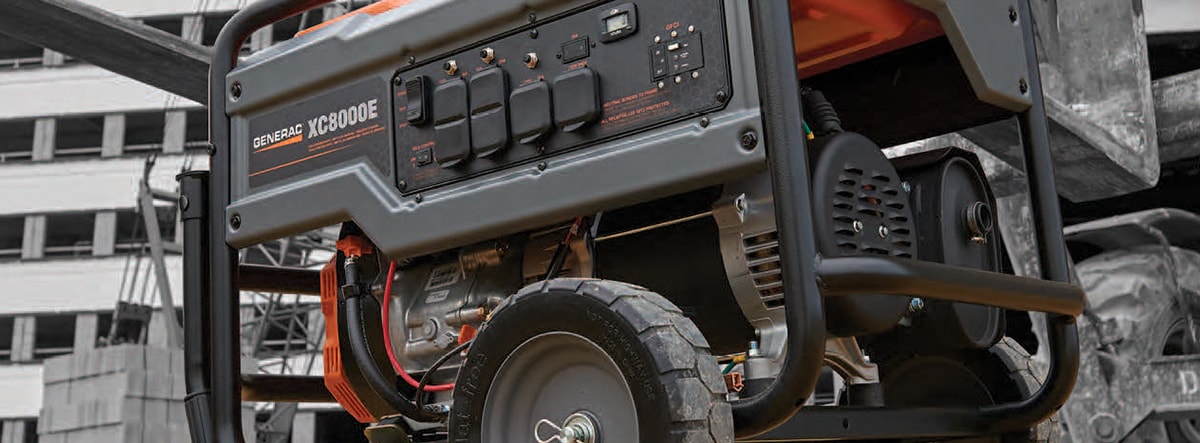
Bonded Neutral vs Floating Neutral Generators
How to avoid tripping a generator with a bonded neutral.

Does your generator outlet trip every time you connect it to your home's transfer switch?
Are you frustrated with searching for a solution through numerous bonded neutral articles and generator forums?
The solution is simple : if you have a bonded-neutral generator with full GFCI protected outlets, you'll need to get a GFI transfer switch to keep those circuits from tripping.
How To Get the Right Switch
Knowing which transfer switch will perfectly match your generator isn't difficult. The chart below will help you determine whether you need a standard transfer switch or a GFI 3-pole transfer switch, based on your generator type.
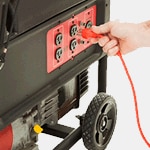
First, What Does 'Ground' Mean?
Electricity, following the path of least resistance, will always try to find a way to ground itself or a way to release its electrons.
Since the earth makes a great path for electrons, that's where current will flow like in the case of a short-circuit or a lightning strike. The danger comes into play when you are caught in-between that path. So the electricity flows through you instead of directly into the ground.
A grounding wire (usually bare copper or green) is used to prevent shocks by routing rogue electrical currents away from a person, should a fault occur. A ground wire is attached to a metal grounding rod buried in the earth.
Floating Neutral vs Bonded Neutral
Neutral wires aka "grounded neutral" are a source of confusion because they too are grounded; the difference being that they serve as part of the circuit by routing current back to the source.
With a bonded neutral generator , the neutral is connected to the frame of the generator. Safety code requires the neutrals to be averted away from the original source (your panel) and connect to the "first means of disconnect" when using the generator. This ensures that electricity will flow properly through the neutral conductors and is delivered to one bonded location - eliminating unpredictable stray voltages caused by connecting to the ground twice.
A floating neutral generator's neutral circuit is not connected to the generator's frame or the ground, meaning it is required to connect the neutral to your existing panel neutral. Both hot and neutral conductors in the receptacles are considered "hot" on these generators, and can both be used to eliminate the risk of shock by allowing electrical currents to connect to the generator frame simultaneously during a short circuit.
What Does GFCI Mean?
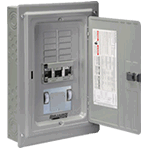
Most built-in GFCI's found on portable generators protect the household type 15/20A, 120-volt outlets, and not on the 120/240 outlets that are used to connect to home transfer switches.
The only time you'll need a GFI transfer switch to connect the generator to your home, is if your generator is fully GFCI protected. Meaning, its 120/240-volt outlets are GFCI protected and without a GFI switch, it will create a ground loop and trip the circuit.
Is My Generator GFCI with a Bonded Neutral?
The best way to know if your generator has full GFCI protection on all its outlets including the twist-lock 120/240V is to look at the front panel, owners manual, or go to the generator product page on our site and look under the specifications tab. If you no longer have the owners manual, you can find it through our owner's manual look-up tool .
Do Not Modify Your Generator!
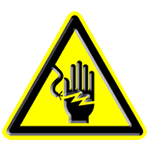
Using a GFI transfer switch will allow you to connect to your home's main panel without tripping, and you'll still be GFCI-protected when using your generator out in the field or on the job site.
- Skip to main content
- Skip to primary sidebar
- Skip to footer
Kyle's Garage
How to Avoid Tripping a Generator with a Bonded Neutral
By Kyle's Team
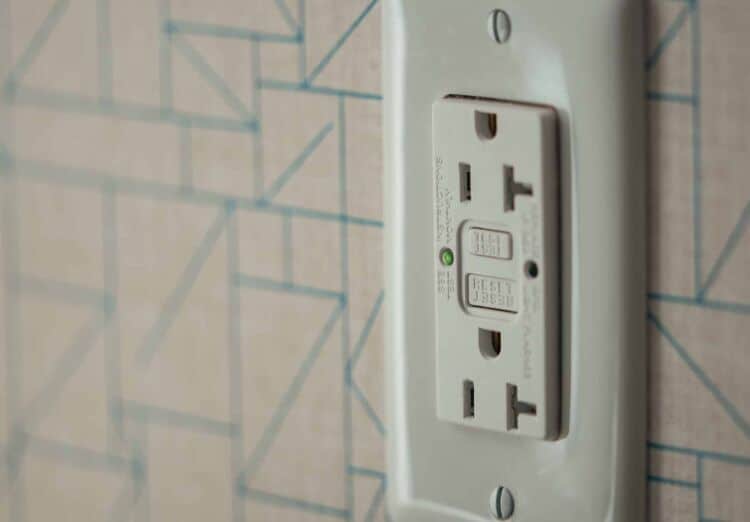
If you have a tripping generator, then you know how frustrating it can be.
Finding the way out is even more frustrating- everyone seems to know what you should do, and yet nobody has a solution .
Well, here is the solution; a GFI transfer switch is the answer for a tripping generator that has a bonded neutral.
If your openings are fully GFCI protected, then the switch can help keep the circuitry from tripping.
Table of Contents
Choosing the perfect transfer switch
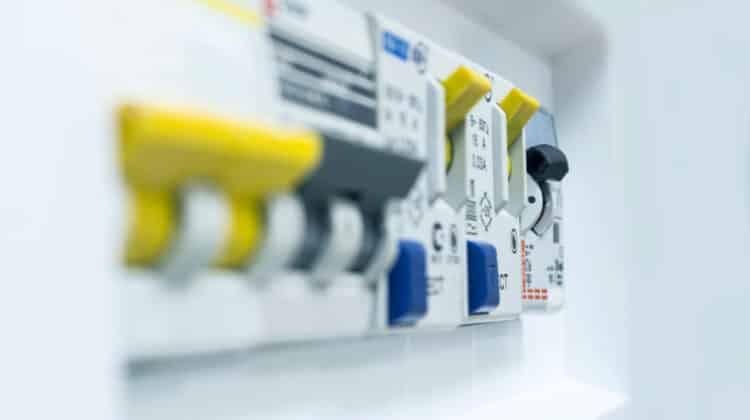
It is longer challenging knowing which transfer switch is compatible with a generator. You can get a controller based on the kind of generator you have.
For instance, you will require a three-pole GFI switch for a bonded neutral one that has the protection of GFCI. However, that kind of generator is incompatible with a two-pole transfer switch.
A bonded neutral generator without a GFCI will perfectly match with a standard transfer switch. But it is still compatible with the three poles.
And the same applies to a floating-neutral generator.
Meaning of ‘ground’
Electricity always tries to find a way of releasing its electrons while it follows the least resistant path.
The earth is one such path. And current flows following this path whenever there is a lightning strike or a short circuit. If you are on its pathway, the electric current shall flow through you to reach the earth.
That is where a grounding wire comes in. you can connect it to a grounding rod and bury it.
The wire will route electric currents away from a person and prevent shocks. It is usually either green or bare copper.
Bonded versus floating neutrals
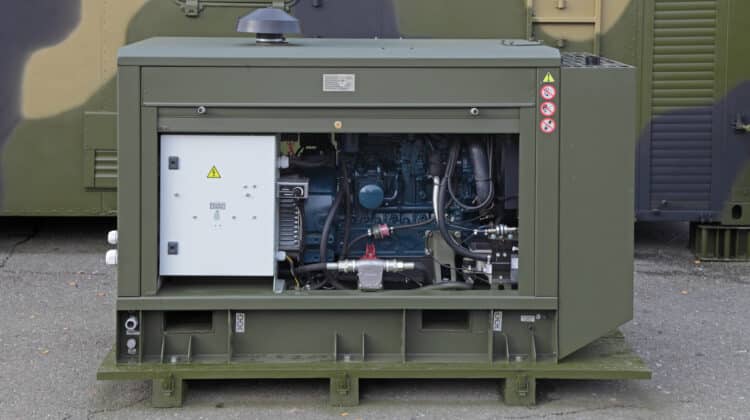
If you can’t help but wonder what the two terms mean, then here is your answer.
Neutral wires act as components of the circuit and route stray current back to its source. These wires are what you may refer to as too grounded, which is why they are also known as grounded-neutrals.
A neutral wire connects to the generator’s casing in bonded-neutral generators. However, in generators, the neutrals avert from the initial origin and instead attach to the ‘first means of disconnect.’ That is for safety purposes.
That way, the electricity flows flawlessly across the conductors, and it conveys to a single bonded location. It eliminates the need to connect the generator to the ground twice, which is less effective and causes the danger of stray voltages.
Floating neutral generators require a connection to the panel neutral. That is because the neutral circuit does not connect to the generator’s casing and is not grounded either.
In the receptacles, both the neutral and hot are ‘hot.’ They allow electrical currents to link with the generator casing at the same time in the event of a short circuit.
That way, they both assist in reducing the risk of shocks.
The meaning behind the acronym GFCI
The GFCI switch prevents tripping by the outlet and reduces the ground loop. The acronym stands for ground-fault circuit interpreter.
You can use most built-in GFCI’s from transportable generators to protect the vents 120V, 15/20A found in most households.
However, you cannot use the same switch for openings used in connecting home transfer switches such as the 120/240 vents. Only use the GFI transfer switch if your generator is entirely GFCI secure.
The 120/240V vents are GFCI secure, and it may trip your circuit or form a ground loop if you do not use a GFI switch.
How to know if your generator GFCI has a bonded-neutral
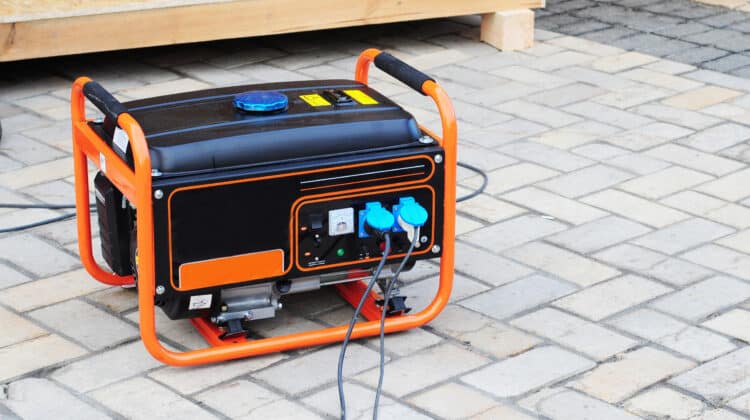
There are several ways of knowing whether your generator is GFCI secure. You can refer to the owner’s manual or check out the front panel.
But don’t worry if you can’t find the owner’s manual. Feel free to visit our website to find the information below the specifications tab. Or use the lookup tool to find the owner’s manual.
Disconnecting your generator
This act is not only dangerous but also against several rules. And as such, you should never disconnect your bonded neutral generator manually.
Besides, it will annul your manufacturer’s warranty.
A GFI transfer switch comes with numerous perks. For one, you will be GFCI secure whenever you use your generator.
And you will no longer have to worry about tripping because the transfer switch allows you to link to the main panel of your home.
Kylesgarage.com is a participant in the Amazon Services LLC Associates Program, an affiliate advertising program designed to provide a means for sites to earn advertising fees by advertising and linking to Amazon.com . Additionally, kylesgarage.com participates in various other affiliate programs, and we sometimes get a commission through purchases made through our links.

Best Faucet Water Filter 2021
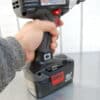
Best Cordless Impact Driver

Best Portable Snow Blower 2021
More Buying Guides
- Buying Guides
- Privacy Policy
(317)831-8677
200 Robert Curry Dr. Martinsville Indiana 46151
Get Connected With Us

Why Does My Generator Circuit Breaker Keep Tripping?
A big storm is heading for your neighborhood. Local authorities have advised you to expect prolonged power outages. Fortunately, you’re prepared because your home has a whole-house backup generator.
As predicted, the storm rolls in, and you lose power; your generator kicks on only to trip a few seconds later. You run to reset the breaker, and the same thing happens again!
While this issue can be frustrating and even potentially dangerous, it’s not uncommon. There are many possible causes for a generator’s circuit breaker to trip, or in some cases, fail without tripping. Fortunately, there are various simple steps that you can take to restore power to your home during a blackout.
What Causes a Circuit Breaker to Trip?
Many homeowners don’t realize that their home generator may come with two different types of circuit breakers. Standard breakers and Ground Fault Circuit Interrupter (GFCI) breakers.
Standard circuit breakers are automatically operated overcurrent protection devices fitted to a generator, designed to trip (cut power) when the unit is drawing in more amps than the circuit can manage.
When too many appliances are connected to a generator, more electricity is flowing through the circuit than it can handle, causing it to overload and trip the breaker to protect your devices.
GCFI breakers , on the other hand, are designed to detect and handle “power leaks” that occur when an electrical current tries to ground itself using a different path than the one provided for the generator.
Power leaks can be caused by a combination of moisture, dust, or worn-out wires. When the GCFI detects a difference in the electrical input and output, the breaker will trip, preventing potential fires or electrocution.
How To Fix a Tripping Generator
The most important thing to remember is that your generator is tripping for a reason. The breakers are doing their job to protect you and your connected devices from harm. If it continuously happens, you’re going to need to address an underlying issue. Here are a few things you can do to fix your tripping breaker:
- Identify which breaker is tripping – If your generator has both standard circuit breakers and GFCI’s, the first thing you need to do is find out which one is tripping to help you narrow down the possible issues.
- Disconnect non-essential appliances during blackouts – Overloading your generator circuit devices is a sure-fire way to trip the breaker. Depending on the size of your generator, you may want to consider limiting your power usage to necessary appliances such as HVAC systems, refrigerators, and garage door openers.
- Avoid “daisy-chaining” power strips – Plugging a power strip into an extension cord or even another power strip is not only an easy way to overload the circuit but, according to the National Fire Protection Agency (NFPA) , is one of the leading causes of home electrical fires.
Contact the Generator Pros
If, even after your best efforts to find a solution, your generator circuit breaker keeps tripping, it’s time to contact the pros. At Midwest Generator Solutions, we care about the safety of your family and your home. For years, our team of expert technicians has provided top-notch generator installation, repair, and maintenance service to the residents of central Indiana.
Don’t get caught in the dark! Contact us today to schedule a consultation.
Thanks for this rattling post, I am glad I noticed this website on yahoo.
It is remarkable, very amusing message
VEciWAFBDbRXIzM
Leave a Comment
Why Does the Generator GFCI Breaker Trip on Some Generators When Used With a Transfer Switch?
A loop in conjunction with the bonded neutral in a home's main panel causes a small induced current when the generator is running. the gfci detects induced current and triggers the main circuit breaker in the generator. jan 12, 2024 • knowledge, environment.
Certain portable generators designed for job site use must comply with OSHA regulations, which mandate GFCI protection on all receptacles. To meet OSHA inspection requirements, these "contractor grade" generators are also equipped with a bonded neutral wire connected to the ground wire. This setup creates a loop in conjunction with the bonded neutral in a home's main panel, causing a small induced current when the generator is running. The GFCI, which includes a ground fault sensor, detects this induced current and triggers the main circuit breaker in the generator.
When utilizing these bonded neutral generators, which also have full panel GFCI protection, to power a house or building through a transfer switch, a switch neutral kit can be employed for 30-amp transfer switches and generators. If a switch neutral kit is unavailable or if the generator has a 50-amp receptacle, such as the XP10000E, an authorized service dealer must eliminate the bond between the neutral and ground.
Important considerations
- This modification renders the generator non-compliant with OSHA regulations for jobsite use (assuming it was compliant previously.)
- The dealer will affix an updated decal to notify users of the change. To determine if the neutral bond can be removed, it is recommended to contact a local dealer. It is advisable to have a dealer perform this task.
- Once the modification is complete, no adjustments to the transfer switch installation are necessary.
- Portable generators used with HomeLink manual transfer switches do not require the removal of the neutral and ground bond.
Related Articles
- Number of Views 371
- Number of Views 1.57K
- Number of Views 35.89K
- Number of Views 227
- Number of Views 439
Need more help? Get in touch with our support team.
Contact Support
Generac Support
24/7/365 customer support.
United States & Canada: 888-GENERAC (888-436-3722)
International: 1-262-544-4811
Online Support
More Resources
Mobile Link iOS mobile app
Mobile Link Android mobile app
PWRview iOS mobile app
PWRview Android mobile app
Privacy Policy
Terms & Conditions

What Causes Generator Tripping?
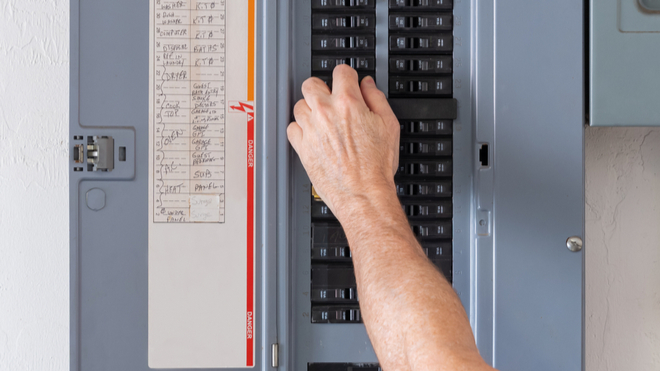
If you follow these articles closely, you know that Merts Heating & Air Conditioning is a big believer in the value of a backup generator . A whole-house generator by Briggs & Stratton is the best way to keep life normal when power outages hit Illinois or Northwest Indiana. That doesn’t mean the system always operates flawlessly.
A GENERATOR CAN TRIP
Sometimes frustration will set in because a generator starts tripping, meaning it shuts down. Just like your home’s electrical system, a generator is protected by one or more circuit breakers. These will switch the generator off whenever an electrical overload or surge is detected. This prevents damage to the generator and the appliances it is powering. That doesn’t make it any less frustrating for the homeowner who’s depending on the generator to keep the lights on during an outage.
WAYS IT CAN HAPPEN
Most of the time this “tripping” scenario can be prevented when a generator is properly installed and receives regular maintenance. Let’s take a closer look at some reasons your generator might trip and steps to correct the problem.
- OVERLOADS— When a whole-house generator is professionally installed it should be able to meet the electrical demands for all the household circuits it’s linked to. If new appliances are added to a circuit, or an appliance is malfunctioning, the electrical load can exceed the generator’s capability.
- RESETTING THE BREAKER— Many times a circuit breaker trips because of a one-time event. Try resetting the breaker and see if the generator will operate normally. If it does trip again you need to call for professional help to find out why.
- GFCI OUTLET(S) TRIPPING— This can happen with portable generators designed to power just a few household appliances and maybe some lights. They are often equipped with GFCI outlets which will shut down if any short circuits are detected.
- CHECK YOUR EXTENSION CORDS— If you have a portable generator chances are good that you’re using extension cords to power things like refrigerators, freezers, TVs, and computers. A faulty extension cord can cause a GFCI outlet to trip. Try checking the cords by plugging them in one at a time to determine which one is causing the problem. Again, if the problem continues the only safe thing to do is get professional help.
AN OUNCE OF PREVENTION
Regular maintenance is the best way to make sure your generator is ready to operate flawlessly when the power does go out in Steger, IL or Crown Point, IN. Problems that could cause your generator to start tripping off can be identified and fixed by the expert technicians from Merts Heating & Air Conditioning. Be sure to like and follow us on Facebook and Twitter for more great information like this.
© 2024 Merts Heating & Air Conditioning. All Rights Reserved. | Privacy Policy

Why Does My Generator Keep Tripping?
Generators are a valuable tool to have, particularly during power outages or when you’re outdoors camping or sailing. However, it can be frustrating when your generator’s circuit breaker keeps tripping, leaving you without power. In many cases, the cause of the tripping is an overload or a power leak/ ground fault . It is imperative to understand the reasons behind these issues and how to resolve them. This article will delve into the common causes of generator circuit breaker tripping, including faulty breakers and loose connections, and provide practical steps to troubleshoot and fix them. So if you’re wondering, “Why does my generator circuit breaker keep tripping?” read on to find out.
What Causes Generator Tripping?
One of the major causes of a generator circuit breaker tripping repeatedly is overload. Every generator has a maximal load capacity, and going over that limit can cause the circuit breaker for that generator to trip. To prevent overloading your generator, it is essential to understand load capability.
Reducing The Load To Avoid Tripping
By unplugging some electronics or appliances, you can lessen the burden on your generator and prevent overload trips. Turn off any additional devices you added to the circuit to reduce the load. You should be aware of load capacities and carefully monitor them if you frequently use your generator outside.
Importance Of Monitoring Load Capacity
Monitoring the load capability is crucial to prevent overusing and endangering the generator. Overloading occasionally can harm the engine beyond repair. Studying the generator’s manual and comprehending its load capacity before using it is crucial.
GFCI Breakers

GFCI ( Ground Fault Circuit Interrupter ) breakers protect people from electrical shocks, which sense ground faults and trip the circuit to turn off the power. They keep track of the electrical current moving through the circuit and contrast it with the current traveling back toward the source. If there is a difference, it indicates that some of the circuit’s electricity is leaking out and moving through something else, like a person’s body. When it’s raining, this can be dangerous.
Power Leaks And Ground Faults
GFCI breakers typically activate due to power leaks and ground faults. This is known as a power leak when energy enters a machine or appliance, even when it is off. A malfunctioning gadget or faulty wiring may cause this. Electricity flowing from the circuit to the earth results in a ground fault. A flawed cabling system, an improperly grounded device, or someone touching an electrically charged surface can cause this.
Moisture and Its Impact On GFCI Breakers
GFCI devices can be significantly impacted by moisture as well. Even without a ground fault or power leak, moisture in or around the breaker can cause the circuit to trigger. Therefore, the circuit breaker will not trip, and an error will not be detected. Water can make a path for electricity to flow through that is less resistant. For GFCI breakers to avoid accidentally tripping, they must be kept dry and clear of moisture.
Faulty Breakers

A faulty breaker is a possible culprit when dealing with a generator circuit breaker that keeps tripping. Signs of a bad breaker include:
- The breaker trips without a load.
- The breaker is short-circuiting.
- There are signs of damage to the breaker, such as blackened spots or a smoky smell.
Importance of replacing a faulty breaker
Replacing your generator’s circuit breaker when you detect a problem is critical. In addition to making your generator fail, a broken breaker risks your safety. You can only use your generator with a circuit breaker.
Replacing a circuit breaker with the proper tools and a little knowledge is a reasonably simple task. It’s always ideal to seek the assistance of a certified electrician if you feel uncomfortable doing it yourself.
Faulty Wires and Loose Connections
The circuit breaker for the generator can also trip due to faulty cables and loose connections. It can still happen, even though it is less frequent than other problems. The breaker can detect a problem with the wiring and trip to stop further harm or danger. The same problem can also be brought on by loose connections, which can prevent the passage of electricity and make the breaker trip unnecessarily.
You can look at the screws holding the wires in position to check for loose connections. The problem is frequently resolved by slightly tightening them. Handling the cables carefully and ensuring they are securely fastened is crucial to avoid any possible risks. It is best to consult a qualified electrician to help identify and resolve the issue if you anticipate faulty wiring. Failure to do so may result in additional damage and endanger you or those near the generator.
Short Circuit
When a wire’s insulation in the generator’s electrical system wears away and the exposed wire comes into contact with other wires or metal parts, a short circuit may result. Bypassing the intended course establishes a direct route for the electricity to flow, which can result in a surge of electricity that trips the generator.
Using a multimeter, you can examine the resistance of the wires in the electrical system to find a short circuit. A short circuit is probably present if there is no resistance. You might have to swap out the electrical system’s harmed parts or wires to resolve a short circuit.
Low Oil Pressure
Oil is necessary for generators to lubricate the internal parts and avoid overheating. The generator may trip due to low oil pressure as a safeguard against harm to the motor.
It’s crucial to routinely check and maintain the oil levels in the generator to avoid low oil pressure. Before every use, you should verify the oil level and change the oil per the manufacturer’s recommendations.
Overheating
Overheating may happen when the generator is used in a place with poor ventilation or an issue with the cooling system. It could result in harm and the generator tripping if the internal parts get too hot.
It is crucial to give the generator the appropriate ventilation by situating it in a well-ventilated area to prevent overheating. Additionally, it’s critical to routinely check the cooling system and remove any obstructions to the airflow.
Fuel Issues
When the generator doesn’t get enough fuel or the fuel is tainted, problems with the power can happen. The generator might fail or operate inefficiently as a result of this.
You can check for clogs in the fuel filter or change the fuel if it is contaminated to solve fuel-related problems. Additionally, it’s crucial to check that the fuel lines are not kinked or damaged and that the fuel tank is correctly vented. Maintenance of the fuel system regularly can stop problems with the gasoline from tripping the generator.
Quick Ways to Fix It
Finding the fault.
A generator circuit breaker problem can be solved by finding the source of the issue. Inspect the generator’s parts for overloads, power leaks, defective breakers, and loose links.
Checking The GFCI Receptacle
Check the GFCI outlet to see if a ground malfunction caused the tripping. See if resetting it fixes the issue. If it keeps tripping, the circuit might have a power loss.
Checking The Cords
Look for indications of deterioration in the generator’s cords, such as frayed wires or cracked insulation. Any damaged wires should be replaced because they could be to blame for the trip.
Checking The Capacitor
The battery handles the generator’s start-up. If it is broken, the circuit breaker might fail. If required, examine the capacitor and replace it.
Checking The Fuel
The circuit breaker may occasionally trip due to issues with the gasoline, such as contamination or old fuel. If required, check the fuel and replace it.
Reducing The Load
If an overload is to blame for the tripping, use a smaller generator or unplug some appliances to lessen the burden on the generator.
Tightening Connections
Verify the tightness of all connections, including cables and screws. Loose links can set off the circuit breaker. For a solution, tighten any open links.
Seeking Professional Help
Contact a qualified electrician or generator expert if you need help resolving the issue. They’ll be able to identify the problem and fix it for you.
How to Know Which Circuit Has Tripped
It can be challenging to identify which circuit is at fault when a circuit breaks. Finding the circuit that tripped to correct the issue and prevent it from occurring again is crucial. The procedures to take to determine which course has been faulty are as follows:
- Check the GFCI breaker : On the GFCI breaker, look for a reset button that has come out. The circuit may have been tripped as a result of this.
- Check the circuit breaker: Look for a tripped circuit switch in the house’s fuse box or electrical panel. Typically, a broken breaker is in the “off” position.
- If the home has a fuse box rather than a circuit breaker switch, check for blown fuses. Look for a dark or metallic blue on the tube containing the explosive.
- Check the electrical panel switches: If off, it could indicate a tripped circuit.
Once you have identified the tripped circuit, reset it by turning off all the connected appliances and flipping the circuit breaker back on. If the circuit trips again immediately, there could be a more severe problem, and you should seek professional assistance. Remember, tripping circuits are a safety feature that protects your appliances from damage, so it is essential to address the underlying issue promptly.
Why does my generator keep tripping?
Numerous factors, such as overloads, short circuits, ground faults, and faulty cabling, can cause generators to trip. Short circuits happen when two wires with opposite polarities contact, creating an electrical imbalance, while overloads happen when the generator is given more power than it can handle. Faulty wiring can occur due to wear and tear, while ground faults happen when electricity seeps through the insulation of the generator.
How can I prevent my generator from tripping?
You can stop your generator from tripping by being careful not to overload it, keeping it in good condition, and routinely inspecting its cabling. Additionally, when connecting items to the generator, use the proper extension cords and outlet adapters.
How can I determine which circuit is tripping my generator?
Examine the GFCI receptacles and the circuit breaker to find out which circuit is causing your generator to trip. On the GFCI outlets, check for a reset button that has popped out, and on the circuit breaker, look for any broken fuses. If everything appears in order, check the outlets to see if they trip with a tiny electrical load, such as a portable radio. If so, there may be a leak or other issue with the exit.
Can a generator trip if it’s not overloaded?
Even if a generator is manageable, it may trip. Even when the power consumption is within capacity, a ground fault or short circuit could cause the generator to shut off.
What should I do if my generator keeps tripping?
Try to determine the root of the problem by using the methods above if your generator continues tripping. It is best to seek expert assistance from an electrician or generator repair technician if you cannot identify the cause. Using a defective generator longer than necessary can be risky and harm your appliances.
How often should I perform maintenance on my generator to prevent it from tripping?
A minimum of once a year, or after 100 hours of use, is advised for generator upkeep. This entails inspecting the spark plug, verifying the oil level, and cleaning the air filter. Regular maintenance can help avoid problems that could trip your generator.

Can the weather affect my generator and cause it to trip?
Yes, extreme weather conditions can influence your generator and trip it, such as high temperatures or heavy rain. To avoid this, ensure your generator is adequately shielded from the elements and ventilated.
Can overloading my generator cause it to trip?
Overloading your generator can indeed make it crash. Every generator has a maximum power production; if you go over it, the circuit breaker on the generator trips. Ensure to operate only a few appliances or devices simultaneously to avoid overloading.
Can faulty wiring in my home cause my generator to trip?
The answer is yes, faulty wiring in your house can trip your generator. Your home’s electrical wiring may trip your generator’s circuit breaker if damaged or improperly fitted. You should call an electrician if the wiring requires repairs.
Can a malfunctioning GFCI outlet cause my generator to trip?
Indeed, your generator may trip due to a damaged GFCI (Ground Fault Circuit Interrupter) outlet. A GFCI outlet is made to recognize electrical leakage and limit power to stop electrocution from occurring. Your generator may trip if the GFCI outlet is broken or malfunctioning. To fix the problem, you might have to replace the GFCI receptacle.
A generator trip is a safety measure to guard your equipment against harm from overloads or power faults. Your generator must receive routine maintenance to guarantee proper operation and prevent frequent tripping when your generator trips, the first thing to do is to determine which circuit—a circuit breaker or a GFCI—has broken. To find the source of the issue, you can then test the GFCI outlets and look for electrical leaks in the cables. It is advised to obtain professional help if the problem continues. Keep in mind to always follow safety protocols when using generators and electricity.
Similar Posts

How To Test A Generator?
We all understand the importance of generators as emergency or backup power sources. Like any machinery, generators require maintenance and testing before they’re needed. Before any emergency arises, conducting various tests on your portable, inverter, or solar generator is crucial to ensure readiness, especially for hurricane season. In this discussion, we will outline different tests…

How To Clean Up Generator Power For Electronics
Clean power is essential for safe and efficient appliance operation. Both old and new generators often produce “dirty power,” which can be harmful to electronics and equipment. To address the question of how to clean up generator power for electronics, there are straightforward methods to obtain clean power, including inverter generators, UPS systems, power line…

Are Predator Generators Made In China?
Knowing where something is made is crucial whether you’re looking for a high-quality or low-quality predator generator. Before choosing the one that best meets your needs, it is vital to conduct thorough research and determine whether or not Can predator generators are manufactured in China. Are Predator Generators Made In China? Yes, the majority of…

How To Store A Generator When Not In Use? 3 Possible Actions
How To Store A Generator When Not In Use? Leave it outside or store it in the garage. If so, you might be placing it in danger of being harmed. Here are some pointers on how to reserve a generator safely. We’ll also provide you with some advice on how to maintain it. Therefore, whether…

How Long Can You Run A Generator Continuously?
A generator is a vital device that offers an electrical supply when required. Generators are fantastic backup power sources in case of a power outage. Additionally, they can be used for outdoor pursuits like camping. But how long can a generator operate nonstop before it needs fuel ( Propane or Gas )? We’ll talk about…

How Much Propane Does A Generator Use?
A severe winter storm wreaked havoc in a small town nestled in the countryside, causing widespread power outages that lasted for days. The freezing temperatures and heavy snowfall made living conditions unbearable for the residents. However, amidst the darkness and bitter cold, one household stood apart.Mr. and Mrs. Johnson had the foresight to invest in…

Why Does My Generator Keep Tripping? [With Best Expert Solutions]
Electric power outages are inevitable, especially during the winter and extreme weather seasons. We can still power our homes or offices and keep things going thanks to portable power generators. Nonetheless, a generator tripping or disconnecting abruptly can cause immense inconveniences during an emergency.
Working in sales, I often get asked, “why does my generator keep tripping?” The most common culprits for this includes, power overload, electrical leaks, short circuits, malfunctioning circuit breakers and more. And you won’t be able to find out the solution unless you detect the problem first.
Any of the faults mentioned above could possibly cause a generator to trip. So, this article focuses on what causes power generators to trip and how to avoid tripping for seamless use of your generator. Keep reading to find out all you need to know.
Why Does My Generator Keep Tripping?
The generators we commonly use in our homes has both the circuit breaker and the Ground Fault Circuit Interrupter receptacles (GFCI). These two devices are for protecting appliances connected to the generator from high voltages and electric shocks. In most cases, a portable generator trips when the circuit breaker disconnects electric supply to the connected devices due to any potential threat .
In cases where the electrical circuit gets into contact with water or with a person’s body, the GFCI acts much faster (1/40 of a second) compared to the circuit breaker to prevent electrocution and life-threatening injuries. Even if the person feels a slight shock, GFCI will sense the ground-fault and cuts off the power supply from the generator immediately.

In contrast to the GFCI , a circuit breaker shuts down the generator to protect connected devices from catching fire in case of high voltage supply . It disconnects the corresponding electrical devices detected to prevent damage and fire hazards.
Circuit breakers work together with fuses , which are thin designed conductors that open into two pieces that break a circuit whenever high current flow offers threats to appliances.
Now, these two components may not work properly when malfunctioning or damaged. And that’s why your generator may keep tripping without any valid reason.
So, in addition to the matters discussed above, a generator disconnecting abruptly can be a result of:
- Circuit breaker failure
- Electric leakage due to GFCI failure
- Tattered wires
- Dust and water particles
- Contact with the human body
- Excess connected appliances
- Power leaks from defective electric devices, etc.

What Happens When a Generator Trips?
When a power generator trips, it goes off, usually suddenly and unexpectedly. A generator has an overcurrent protection system that trips, causing it to shut down when there is a power fault or overload. This protection mechanism is put in place to ensure your appliances are safe when in use.
Although you may see both the circuit breaker and GFCI as a problem now due to frequent tripping, in reality, they are lifesavers. Keep it in mind when buying a power generator.
How Do I Stop My Generator from Tripping?
As aforementioned, a generator will only trip if the circuit breaker and the ground fault circuit interrupter detect problems related to the generator’s power supply capacity. It can sometimes be challenging to determine which circuit is responsible for the fault, and not all generators may have the GFCI breaker.

The secret is to look for the reset button beside the electrical outlets. Why? GFCI breakers have these buttons at the outlets for protection purposes.
When you face such a challenge, to stop your generator from tripping, you will need to determine which of the two circuits is behind the problem. If your generator has both circuits, carry out tests on the GFCI outlets, and try to reconnect the circuit breaker and the GFCI.
How to Know Which Circuit Has Tripped?

Here are steps you should follow to identify which circuit has tripped:
- GFCI breaker – Confirm the presence of a popped-out reset button.
- The circuit breaker – Confirm it in the electrical panel or the house’s fuse box.
- Blown fuses – Confirm the presence of a dark/metallic blue on the tube enclosing the breaker or the fuse.
- See if the Tripped Electrical panel switches- are off.
1. Testing the GFCI Outlets

In order to test whether the GFCI outlets are responsible for the generator to trip or not Follow the steps below:
Step 1: Switch off the generator.
- Unplug all the household appliances from the generator,
- Disconnect all items that are not important from your outlets.,
- Switch on the generator.
Step 2: Press the reset button.
- Check if the generator is still running or not,
- If not, you need to replace the outlets.
Step 3: If your GFCI receptacle is okay.
- Try to connect a small electrical load, for example, a portable radio, directly into the generator without using an extension,
- Wait to see if it trips or not for about 15 seconds,
- If not, then the receptacle is functioning just fine.
Step 4: Try using a different small load such as a bulb to confirm if it is operating correctly
- If each load you are connecting trips further,
- You need to seek professional assistance for proper service to your generator.
Step 5: You can repeat steps 3 and 4 with an extension
- If the generator continues to run in step 3, then there could probably be a leak,
- If the generator trips again in step 4, get professional assistance.
2. Check the Cords for Electrical Leaks

If you happen to use extension cords to connect your devices, after testing your GFCI outlets, you should also check your cables following the same procedure you used on your GFCI receptacles. Connect each of the cords to your generator in turns, check for the presence of moisture or dust particles causing the leaks. If any cables trigger the generator to trip, discard and find a new one to replace it.
3. Reconnect the Circuit Breaker and the GFCI

After performing the tests above, it is now the right time to reconnect your home appliances directly to the generator and confirm if any of them are responsible for the issue. Sometimes it can be the house’s wiring or Heavy loads and the capacitor.
Confirm the Wire

It is crucial that you check your wires now and then because improper wiring and the presence of damaged cables can cause your circuit breaker to misbehave, and consequently, the generator will trip.
Heavy Loads
In some instances, a generator will trip after a load is connected. We can say that the load is heavy or an external short circuit occurred. You may need professional assistance from an expert to help you fix that external short circuit.
It can be challenging to trust and check the inbuilt indicators inside the circuit breaker. These indicators show when the device has tripped and if there is an overload within the connected devices . Indicators can fail to indicate, or the whole breaker stops functioning.
You can test the capacitors using a multi-meter , which measures an electrical device’s current flow, voltage, and resistance. In this case, it is used to monitor the resistance of lead wires inside the panel. If you see infinity on the readings even though appliances are not connected, this shows that your breaker is not working and needs to be replaced.
Things to consider when choosing the right capacitor:
- Acquire a capacitor that can still function under high temperatures.
- Corrosion resistance when exposed to moisture.
- High potential to resist electric surges.
Every generator has a circuit breaker and fuses that protect your appliances against surges. This breaker will automatically trip in case there is an overload on the generator. But due to heavy loads or other internal issues, circuit breaker and GFCI can malfunction, leading to your generator tripping abruptly.
It is essential to always check a generator’s load capacity before purchase to avoid such inconvenience. If, even after following the measures I mentioned above, your generator keeps tripping, we recommend you contact a professional for further assistance.
Remember that frequently overloading your power generator to tripping shortens its life expectancy. It may cause other components to stop working. For safety, it is recommended that you mount your generator far away in a well-ventilated cabin to avoid carbon poisoning; or you can get an ideal generator for an enclosed trailer .
About The Author

Jose Barton
Leave a comment cancel reply.
Your email address will not be published. Required fields are marked *
Save my name, email, and website in this browser for the next time I comment.
Generator GFCI Keeps Tripping: 5 Reasons & Fixes
It’s common for Ground Fault Circuit Interrupter outlets to trip, especially during the rainy season. They’re attempting to tell you something’s wrong when they trip.
Why does your generator GFCI keep tripping?
There are several possibilities. When a GFCI trips, it signals power leaks from the grounding circuit. Overloaded circuit triggers the GFCI causing it to malfunction. The fault may lie in the wiring or the GFCI outlet. Moisture buildup in the receptacle box can be another important factor for it.
This was just an overview of the reasons. The causes, as well as possible solutions, are described in detail below.
Continue reading!
Why Does Your GFCI Trip
GFCI is literally a life-savior but it can be really frustrating when it starts tripping. Read on to know why these issues occur:
Reason 1: Occurrence of a Ground Fault
Improper wiring or deteriorated wire insulation can lead to GFCI wiring issues . When a GFCI detects even a minor amount of current leakage, it trips.
If a ground fault generates a current spike, the circuit breaker trips and the power goes out. And if the circuit in your home goes dead, it’s probably because of a ground fault.
To test for current leakage, unplug the circuit and turn off all switches. Examine the equipment for signs of wear. Any damage to the electrical portion is exposed to further problems and is not under protection
Reason 2: Overloaded Circuit
When you attempt to use more energy than the circuit can handle, you create a circuit overload.
This triggers overload protection. When a circuit is overloaded, the GFCI outlet will open up and trip. It will ultimately cut off power to that circuit, thereby shutting down the electricity.
To understand whether overloading is truly the issue, perform the following things.
Disconnect any appliances connected to the circuit and reset the fuse box circuit. Wait a few moments. Reconnect an appliance and turn it on.
Verify that your circuit has not been tripped. Connect the following appliance, turn it on, and check the breaker, as necessary.
If the issue persists, it’s because of a circuit overload. So, a new dedicated circuit and outlet may be required.
Reason 3: Moisture
Sometimes, moisture inside the line trips the GFCI. This problem is mostly seen with outdoor outlets.
Water can enter into uncovered exterior electrical boxes. Excessive rain or humidity are also to blame. Moisture can enter inside an appliance’s wiring too.
Reason 4: Electrical fault
If your GFCI outlet continues to trip, it might be due to faulty structural wiring. An electrical outlet linked to the same circuit might potentially be the issue.
Over time, the wiring might deteriorate. This especially goes for wires that have been pinched or over-tightened during installation. It is capable of breaking at such stress.
Reason 5: Bad/Backdated GFCI Outlet
Faulty GFCI Outlets are one of the most common electrical assessment mistakes found during home inspections.
GFCI outlets, like other electrical components, deteriorate with time.
Internal circuitry in GFCI outlets is extremely sensitive, detecting flaws in the electrical system. With time, the circuitry in the outlet deteriorates, rendering it dysfunctional.
They have been known to last up to 25 years but can fail considerably sooner. Numerous sources recommend changing them every ten years.
Those are the most common reasons. Now, go for further reading for the fixes.
Troubleshooting the Issue
If the GFCI has tripped, you must check for two things in the generator’s outlets. Check for a leak in a domestic circuit or in the outlet itself.
However, if your GFCI outlet displays yellow light , you should replace it rather than troubleshoot.
Step 1: Turn-off & Reset
Turn the generator off. Disconnect the generator’s cords and any connected devices. Afterward, restart the generator. Then reset the GFCI. First, disconnect any appliances connected into the same circuit as the GFCI.
To reset the GFCI outlet, check the two little buttons on the front. Press the RESET button which is usually red, while the TEST button is usually black.
It’s possible that your GFCI outlet’s letters and colors have faded. It makes the TEST and RESET buttons difficult to identify. If this is the case, consider replacing the GFCI.
When you push the RESET button, your appliance should work again.
Step 2: Checking Appliances
After resetting, connect a small, single electrical load to the generator for at least 15 seconds.
If it doesn’t trip, the GFCI is probably working. Move to step three.
Somehow If it trips, try again with a different electrical load to rule out any hardware issue.
Is the GFCI still tripping? Then stop troubleshooting and service your generator. If not, disconnect the single electrical load and troubleshoot.
Step 3: For Multiple Extension Cords
Repeat step two with your extension cord connected. If you’re using numerous extension cables, inspect each one individually. And ensure that any intermediate connections are secure and free of dirt or moisture.
If the GFCI receptacle trips at any point, a faulty extension cable has been discovered. Replace the extension cable with a fresh, dry one and attempt again
Wiring is very crucial and it should be checked every 2-3 days.
Step 4: For Multi-Outlet Power Strip
Are you using a multi-outlet power strip? Then try connecting it now and plug in an electrical load. If not, then proceed to step 5.
If the GFCI receptacle trips, then a defective multi-outlet strip has been detected. Replace the multi-outlet strip with a new multi-outlet strip and proceed with troubleshooting.
Step 5: Testing Additional Electrical Loads
First ensure that your extension cables and power strips are leak-proof. Now attach additional electrical loads one at a time to determine if they trigger the generator.
To test, an electrical load requiring constant, even power should be plugged in. It should be for at least 15 seconds. However, cyclical and motor operating loads might require additional time to locate the leak.
If the GFCI trips, it indicates a faulty electrical load. It’s time to disconnect, replace, or service the appliance after turning off the generator.
Final Solution: Choose the Right Circuit Breaker
While there is no way to regulate power surges and undesirable tripping, choosing the correct capacitor can help. Here are some tips for buying a capacitor:
- Choose a capacitor that can handle enough voltage and won’t overheat.
- Your capacitor’s interrupting capacity should be sufficient enough to avoid power fluctuations.
- Always check that the capacitor you buy is recalibrated for the environment it will be used in.
And as previously stated, dust and moisture can cause generator tripping. So clean the capacitor on a regular basis.
Luckily for you, I have already listed some of my favorite picks:
You’ll get durable and satisfactory results from these circuit breakers.
If none of the procedures work, it’s better to seek help from experts. Also, choose a GFI transfer switch that works best for a tripping generator with a bonded neutral.
Question: Why does a breaker trip in the absence of a load?
Answer: The breaker may trip in the absence of a load for two reasons. Positive juice is constantly fed to the breaker trip coil from somewhere. Or, there is a mechanical issue with the breaker that’s causing it to trip on closing.
Question: Why is my generator always shutting down?
Answer: If there’s a problem with the oil level in your generator, it will shut down. Either the oil level is low or there is an oil overflow in the generator.
Question: What is causing my generator to fluctuate?
Answer: It is possible that the generator is overloaded. And the load electrical appliances are regularly started, causing significant voltage fluctuations.
Final Thoughts
I hope you’re clear on everything about your generator GFCI keeps tripping. Remember to take proper precautions while setting up and troubleshooting your GFCI.
Additionally, if you are unsure about handling electrical circuits, always consult a professional
It’s time to wrap up for today.
Until then, have a lovely day!
A Manual Transfer Switch for GFCI and Bonded Neutral Generators
WINCO portable generators are designed with a bonded neutral, the neutral and ground tied together inside the panel. This allows the generator to be safely used in portable configurations.
Whenever you connect a portable generator to a building’s electrical system the NEC code requires you to brake the neutral to ground bond on the generator. This creates a new risk if the portable generator is used as both a home back-up and mobile power source since changing the neutral to ground bond should be left to an experienced electrician.
To solve this problem Winco only offers manual transfer switches for our portable generators that are compatible with bonded neutral generators. An additional benefit of these switches is that they also work with our models that provide full panel GFCI protections.
W INCO offers the Reliance XR series manual transfer switches.
The Reliance XR series are three pole manual transfer switches. By switching the neutral these manual transfer switches meet the NEC code allowing direct connection of bonded neutral generators and are compatible with GFCI protected switches.
Check out our help topic on which type of transfer switch is right for you.
You can find all of the manual transfer switches we offer here .
I hope you found this helpful!
17 thoughts on “ A Manual Transfer Switch for GFCI and Bonded Neutral Generators ”
Looking for a price on a bonded neutral transfer switch or panel, up to 10 circuits.
Hello Jeremy, someone from our sales team will be contacting you. Otherwise, you can call 507-357-6821 for pricing too.
I have a new 2021 Ford F150 Powerboost that has an onboard 7.2kw ProPower generator that I would like to use with a transfer switch to power my home in the event there is a power outtage. I am told the ProPower generator utilizes a bonded neutral and I have some questions about this. Could someone contact me?
Hi Jed, I am having someone in our Sales Department email you.
If you haven’t already installed a manual transfer switch, I can tell you first hand that mine (different brand) works GREAT. 2021 Lariat w/7.2Kw ProPower. There are numerous success stories on F150 forums. As long as your house wiring is up to code, it will work without any modifications to the ground connector on the plug.
I have the same question as Mr Lackman I need to power the whole house panal with an out building
Hi Paul, I will have our Technical Support team contact you.
Also looking for a transfer switch that will work with the 7.2kw bonded neutral generator from my new 2021 Ford F150 PowerBoost.
Hi David, this will work with the Reliance 30Amp MTS.
If the generator has an internally bonded neutral, how does the external transfer switch brake the bond?
My 6KW portable generator has a GFCI 25a main breaker. The breaker trips with the generator neutral connected to the service panel neutral. From what I have read online, I need to use a 3-pole GFI transfer switch. Your thoughts ?? What switch would work for me?
Most Winco portable generators have a neutral-ground bond. Depending upon how you have the generator connected to your house, you may need to have the neutral-ground bond in your Winco generator disconnected in order to stop the nuisance tripping you are experiencing with your GFCI circuit breaker. To be sure, give Winco Service Department a call at (507) 357-6831 and ask for technical support to discuss the specifics of your install first.
Need help with a transfer switch using an interlock kit with Ford Powerboost. I do not want to limit myself to just the 10-16 circuits. I prefer to energize my entire panel and use the interlock as intended. I wish someone made a generator three position switch to break the bonded neutral while in generator mode. I look forward to speaking with someone.
1.) Most home panels are 100 to 200 amps. The largest Ford F-150 Generator option has max output of 30 amps. There is no way to energize your entire main panel with just 30 amps. (I.e. if you need to power more than 10 circuits, then you most likely will need a larger generator.)
2.) To our knowledge, Ford is not sharing how to, or recommending that customers disconnect the neutral-ground bond in their generator panel.
3.) The discussion regarding how to connect a back up power source to your home safely and legally is one that you should be having with your licensed electrician. We can only provide helpful advice on this subject pertaining to the products we make and sell.
Is there a model that doesn’t include breaker spots that can be used between a main and sub panel? Our sub panel is small enough, and generator is big enough, that there is no need to move breakers to a critical loads panel.
These generators are designed with a bonded neutral, but when connecting them to a building’s electrical system, the NEC code requires breaking the neutral to ground bond, raising safety concerns for those using the generator as both a home backup and mobile power source.
What specific safety precautions should individuals take when breaking the neutral to ground bond on a WINCO portable generator to ensure their safety and the proper functioning of the generator?
When connecting a generator of this type to a building, NFPA 70 refers to this as a ‘separately derived system’. When connecting it to a building a transfer switch specifically designed for GFCI and bonded neutral generators is required.
That being said, For your safety, all wiring must be done by a qualified electrician and conform to the National Electric Code and comply with all state/local codes and regulations. Check with local authorities before proceeding.
Your email address will not be published. Required fields are marked *

- Forum Listing
- Marketplace
- Advanced Search
- Electrical Trade Topics
- Services and Service Equipment
Generator gfci breaker tripping on transfer
- Add to quote
Generac manual transfer panel 6852 Briggs and straton propane 7kw generator 040248 The transfer switch is a 3 contact switch (switchs neutral). The transfer switch acts like a 50 amp sub panel. 50 amp breaker in home panel, 30amp receptacle outside for generator, 8 breakers in the panel, neutral bar for the 8 breakers being used in the panel. Testing confirms that there is no ohm reading between generator neutral and ground when the generator is unplugged. Generator has its own neural/ground bond that tests good when plugged in. With all the breakers turned off in the house panel except the 50amp supplying the transfer switch and all breakers in the transfer switch turned off. (done to remove a lot of possible problems) With the generator running and plugged in when attempting to transfer the breaker on generator trips. Turn of the 50amp in home panel and transfer will complete with out a problem. With all breakers turned on except the 50 amp in the home panel (generator is going to transfer and pick up the load) the transfer will complete with out a problem. The transfer requires power on the system that is being transferred to so with the transfer switch being powered by the generator and the 50 amp home panel turned back on (both lights on indicating that you can switch back to normal power) If you press the transfer switch it transfers but trips the generator. Its only during the act of transferring that seems to trip the generator. It does seem weird that the transfer switch coil only has 3 wires. Its 240v and it has micro switchs that's meant to protect it during the transfer. The breaker on the generator is listed as a gfci so it shouldn't be a acr fault. This is a new install at my own home Anyone seen anything like this.
Did you read the manual? Look in the troubleshooting section. Did the xfer. sw. come with the unit?
The switch did not come with the generator. The switch is new and the generator is probably 8 years old. I have read both manuals cover to cover and ive emailed the xfer panel manufacture to see if they will assist. There is no controls diagram with the switch so theres no way to check if the unit was wired correctly at the factory. Ive triple checked the house wiring and followed there start up and test procedure and the switch passes every test until you switch with both the generator and house wiring being live at the same time.
On the surface, you have the right kind of transfer switch for a generator with a GFCI panel on it, one that switches the neutral. In theory it should work. I have installed one before, but on a bonded neutral/ground generator without the GFCI panel. Looking online, there was an optional transfer switch made by Cutler Hammer that would switch the neutral available from Briggs, though I don't know if it's available anymore. May still be available from Cutler Hammer. I'd have to look. Kind of a unique model, a standby with a portable type panel in it, with connections for a couple of BBQ grill tanks.
You said trips....does it grunt during transfer? How much does your amp clamp read as a surge during transfer? It better NOT be GFCI...Just regular ground fault for equipment which is what it should be. If you start and run after transfer dies it trip? Thinking it can't handle the load or there's something wrong with either the regulator or the breaker. Do you have access to a load bank? Was it installed by generator company? Sent from my SM-T350 using Tapatalk
paulengr said: You said trips....does it grunt during transfer? How much does your amp clamp read as a surge during transfer? It better NOT be GFCI...Just regular ground fault for equipment which is what it should be. If you start and run after transfer dies it trip? Thinking it can't handle the load or there's something wrong with either the regulator or the breaker. Do you have access to a load bank? Was it installed by generator company? Sent from my SM-T350 using Tapatalk Click to expand...
It is GFCI (for personnel) and there are a few out there that come this way.
It seems this generator was designed to be used on new home building sites. The generator should be set up and a ground rod installed then checked by the building inspector before being used to power the worksites tools.
After spending a little time trying to backwards engineer the switch I keep ending up thinking its the coil. I still can not work out how a coil that had 4 wire can have one cut off at the factory and work as a 3 wire coil. The coil has 2 white wires and one orange wire (second orange was cut off real short near the coil). Resistance measured between any of the 3 wires reads about 4.8m ohm which seems high for a 240v coil. Starting to draw a diagram to see if it makes more sense on paper. (every transfer switch I have worked on has always had 2 coils to do the transfer so this single coil seems weird.
Have a Megger? Or access to one? I'm leaning towards a short somewhere too. This problem would show itself when people would buy portables with panel gfci protection and then try to use interlocks or some non neutral switched transfer switch.
nrp3 said: Have a Megger? Or access to one? I'm leaning towards a short somewhere too. This problem would show itself when people would buy portables with panel gfci protection and then try to use interlocks or some non neutral switched transfer switch. Click to expand...
You have a N-G bond at the panel end and a N-G bond at the generator. Of course the GFCI trips.
I'm not sure what you are trying to say.
GPOP, did you ever resolve your issue with the your generator gfci breaker tripping when you operate you generac 6582 transfer switch? I have the exact same issue with my setup. I have a generac 6852 transfer switch and a generac xc8000e generator. Likewise my generator main gfci breaker trips when transferring back to utility power.
Turnerjr welcome to ET Please take the time to fill out your profile. Them start a new thread to ask about yours.
gpop said: Generac manual transfer panel 6852 Briggs and straton propane 7kw generator 040248 The transfer switch is a 3 contact switch (switchs neutral). The transfer switch acts like a 50 amp sub panel. 50 amp breaker in home panel, 30amp receptacle outside for generator, 8 breakers in the panel, neutral bar for the 8 breakers being used in the panel. Testing confirms that there is no ohm reading between generator neutral and ground when the generator is unplugged. Generator has its own neural/ground bond that tests good when plugged in. With all the breakers turned off in the house panel except the 50amp supplying the transfer switch and all breakers in the transfer switch turned off. (done to remove a lot of possible problems) With the generator running and plugged in when attempting to transfer the breaker on generator trips. Turn of the 50amp in home panel and transfer will complete with out a problem. With all breakers turned on except the 50 amp in the home panel (generator is going to transfer and pick up the load) the transfer will complete with out a problem. The transfer requires power on the system that is being transferred to so with the transfer switch being powered by the generator and the 50 amp home panel turned back on (both lights on indicating that you can switch back to normal power) If you press the transfer switch it transfers but trips the generator. Its only during the act of transferring that seems to trip the generator. It does seem weird that the transfer switch coil only has 3 wires. Its 240v and it has micro switchs that's meant to protect it during the transfer. The breaker on the generator is listed as a gfci so it shouldn't be a acr fault. This is a new install at my own home Anyone seen anything like this. Click to expand...
- ?
- 93.6K members
Top Contributors this Month

My Generator Breaker Keeps Tripping | Causes and Fixes
By Author Jim James
Posted on Last updated: February 1, 2023
Whether you use a portable generator or you’ve installed a whole-house generator, you expect it to provide power to your home when an outage occurs. However, the circuit breakers in the generator that protect you, your family, and your home can trip when it starts. There are 2 different types of circuit breakers that can trip for different reasons.
All generators have a standard circuit breaker, with some having a Ground Fault Circuit Interrupter (GFCI).
When a standard circuit breaker trips, it means the circuit is overloaded. When a GFCI trips, it indicates power leaks outside of the grounding circuit.
Read on to learn what causes your generator to trip circuit breakers and how to restart it. I’ll also explain how to fix the problem and how to prevent it from recurring.

Reasons a Generator Trips Its Circuit Breakers
All generators have a standard circuit breaker. Some also have a GFC (Ground Fault Circuit Interrupter).
Each of these circuit breakers detects a different problem with the electricity provided by the generator.
Why Does the Standard Circuit Breaker Trip?
Like your circuit breaker or fuse box, your generator’s standard circuit breaker monitors the amount of electricity or amps needed for the household circuits connected to your generator.
Generators have different capacities when it comes to the amount of power they can supply.
The generator’s standard circuit breaker detects when the demand for power overloads the generator’s capacity and, therefore, breaks the circuit causing the overload. For instance, appliances plugged into household circuits connected to a generator may need more energy than the generator can supply.
Why Does the GFCI Breaker Trip?
When the GFCI breaker detects a sudden flow of electricity through the grounding wire connected to a household circuit, it breaks that circuit. It prevents electricity from flowing through a dangerous, unintended connection.
Not all generators have a GFCI breaker. If you don’t know whether or not your generator has this circuit breaker, look for the reset button next to the electrical outlets — GFCI-protected outlets have reset buttons.
The GFCI monitors the amount of electricity flowing through the grounding wires of the circuits that you’ve connected to your generator.
The National Electric al Code requires the grounding wire protection provided by GFCI breakers for specific household electrical circuits. These circuits feed power to outdoor areas, garages, unfinished basements, kitchens, and bathrooms.
When the circuits operate properly, no electricity flows through the grounding wire . That wire connects to the earth.
The grounding wire provides a safe route for electrical leaks, the sudden excessive flow of electricity that occurs during a short circuit.
For example, short circuits occur when the “hot wire” that carries the electrical current comes into direct contact with the neutral wire in an electrical circuit.
The grounding wire also absorbs excessive current when a person or animal accidentally completes the circuit between the hot and neutral wires. In this case, it acts to prevent accidental electrocution.
How To Restart the Generator
If your generator has both a GFCI breaker and a standard breaker, you’ll need to determine which one or if both tripped. If the GFCI has tripped, you’ll need to test the generator’s outlets to determine whether a leak in a household circuit caused the generator to trip or whether it was a leak in the outlet itself.
How To Determine Which Breaker Has Tripped
Follow these steps to determine if your GFCI or standard breaker has tripped:
- Check your generator’s reset button. If it has popped out, it means the GFCI breaker has tripped.
- Check your home’s fuse box or electric panel to determine if the standard breaker has tripped.
- Look for blown fuses. They typically have a metallic or dark smudge on the tube surrounding the fuse’s circuit or a break in the circuit wire.
- Check for tripped electric panel switches, which will be flipped toward the off position.
How To Test the GFCI Outlets
Here are the steps to test if the GFCI breaker trips in your GFCI outlet:
- Turn off the generator.
- Disconnect the generator from all household circuits.
- Unplug all non-essential items from your household outlets.
- Turn on the generator.
- Depress the reset button.
- Wait to see if the button remains depressed and the generator continues to run .
- Plug a lamp with a single bulb directly into one of the GFCI outlets.
- Replace the lamp and plug in an item with a different small load if the generator continues to run for at least 15 seconds.
- If the generator continues to run, repeat step 8 a few more times.
- If the generator continues to run, then the GFCI breaker was most likely tripped by a leak.
How To Check for Electrical Leaks in Cords
When your power is off, it’s understandable that all you want to do is get your generator running and restore power to your house. However, hidden electrical leaks can start fires, create shock hazards, and even electrocute people and pets. It’s essential to find them and avoid sending power through the circuit, causing the problem.
To find the leak:
- Collect the extension cords, power cords, power strips , and surge protection strips that were in use when the generator tripped.
- Plug each one into one of the generator’s GFCI outlets one at a time.
- Discard any of these cords that cause the generator to trip.
How To Reconnect the GFCI and Standard Breaker
If your GFCI breaker tripped and you haven’t found the source with the tests above, it must be either in a household appliance, the household mechanicals such as your furnace or water heater , or the household wiring.
If your GFCI breaker and standard breaker both tripped, you’d have to search for the source of the leak and the source of the overload at the same time. It’s time to reconnect your generator to your household circuits.
Follow the steps below:
- Turn off or unplug everything in the part of your house that lost power when your generator tripped.
- Reduce the load on the generator by turning off or unplugging any nonessential appliances and items in the rest of the house.
- Turn off the main switch and turn off all of the sub-switches on the board If you have an electrical panel.
- Turn on the generator and let it run for a few minutes.
- Plug in the power cord that connects your generator and your house.
- Replace the burnt-out fuses one by one if you have a fuse box, waiting to see if a fuse burns out or if the generator trips.
- Turn the main switch on if you have an electrical panel. Wait a few minutes before flipping the sub-switches on one at a time and then about five seconds before flipping the next sub-switch.
- Check if a fuse blows or a switch on the electric panel trips back off. If it does, that means you’ve found the source of an overload. Check to see what items are using that circuit. Either remove them or switch them to a different circuit to reduce the load. Replace the fuse or flip the switch back on.
- Check if the GFCI breaker trips. If it does, it means you’ve found the circuit where the leak is occurring. Check to see what items are using that circuit and disconnect them until you or an electrician can check them for electrical leaks.
- Plug in or turn on any essential items or appliances one at a time, and wait to see if either the standard breaker or the GFCI breaker trips. If the standard breaker trips and the item is necessary, try moving it to an outlet on a different circuit. If the GFCI breaker trips, you’ve identified the source of a leak. Turn it off, unplug it, and don’t use it until it’s repaired.
How To Keep the Generator Running After a Restart
Here are some tips you can use to keep your generator running after a restart:
- Caterpillar provides a calculator that you can use to determine how much load you’re putting on your generator. Reduce the burden until it’s about 80% of your generator’s capacity.
- Try switching items from household circuits with power-hungry appliances to ones that are drawing smaller loads.
- If you’re using an appliance that draws a lot of power or running your air conditioner , reduce the number of other items running simultaneously.
- Plug items directly into outlets. Avoid using large numbers of extension cords.
- Don’t plug multiple extension cords, power strips, or surge protection strips into each other.
- Ensure that all of the connections you’ve plugged in are dry, including those to your generator.
- Avoid running your generator in the rain or if it’s standing in water. Also, don’t run it in your basement or an attached garage.
- If you have a screened-in patio or patio with an open-sided cover next to your home that would provide shelter for your generator, you could place the generator away from flammable chemicals and materials and run it from there.
- Don’t plug in any item that you’ve identified as a source of an electrical leak. Check the item for exposed or broken wires, frayed insulation on the cord, and a broken plug. However, you may need a professional electrician or the manufacturer’s certified repair site to identify and repair the problem.
How To Prevent Breakers From Tripping
Follow the guidelines above when you’re operating your generator. Test your generator’s GFCI outlets regularly to make sure that they are operating correctly. Also, have your home’s wiring, electrical panel, and GFCI circuits inspected regularly.
Older appliances are less energy-efficient than newer models. They require more power to operate. So, begin replacing older models with newer ones to place less demand on your generator.
Use the Caterpillar calculator to determine the size of the generator you need to provide electricity to everything you want to power during an outage .
If your generator lacks the capacity you need, replace it with a larger portable generator or a whole-house generator.
Durostar DS10000EH Dual Fuel Portable Generator
This portable generator available on Amazon is approved for use in all 50 states, including California. It produces 8,000 watts of power during regular operation. But at startup and for temporary surges in demand, it produces 10,000 watts.
Designed as a home backup generator or to power an RV, the Durostar Dual Fuel Portable offers a choice of using gasoline or propane for fuel. The power panel provides a 240V 30A outlet, a 240V 50A outlet, two 120V GFCI household outlets, and a 120V 30A twist-lock outlet.
It also includes a voltmeter and 12V DC charging posts that you can use to charge dead or dying batteries . You can operate the 240V and 120V outlets simultaneously or provide full power to the 120V GFCI household outlets.
Remember that your generator is also a motor, just like the motor in your car. It has spark plugs that need to be kept clean and replaced. It also needs its oil and fuel levels kept up and has a carburetor that may need adjusting.
Any service that your car needs, your generator will also need. Lack of service to your generator’s motor may not cause tripped circuit breakers. But it can and will stop your generator from running.
Final Thoughts
When setting up and troubleshooting your generator’s operation, remember that you’re working with electricity. You should take precautions to protect yourself, such as using insulated tools and wearing rubber gloves.
SafetyRisk provides a list of 15 precautions for homeowners and electricians. They also suggest how to discharge low-voltage capacitors with a pair of insulated screwdrivers and high-voltage capacitors with a lightbulb.
One poignant tip is to remember to leave a note by the electrical box that you’re working on an electrical circuit so that no one turns the main switch on again while you’re working.

Hey, I’m Jim, and I’m the author of this website. I have been teaching people a wide variety of survivalism topics for over five years and have a lifetime of experience fishing, camping, general survivalism, and anything in nature. In fact, while growing up, I spent more time on the water than on land! I am also a best-selling author and have a degree in History, Anthropology, and Music. I hope you find value in the articles on this website. Feel free to contact me if you have any questions or input!
Ad-free. Influence-free. Powered by consumers.
The payment for your account couldn't be processed or you've canceled your account with us.
We don’t recognize that sign in. Your username maybe be your email address. Passwords are 6-20 characters with at least one number and letter.
We still don’t recognize that sign in. Retrieve your username. Reset your password.
Forgot your username or password ?
Don’t have an account?
- Account Settings
- My Benefits
- My Products
- Donate Donate
Save products you love, products you own and much more!
Other Membership Benefits:
Suggested Searches
- Become a Member
Car Ratings & Reviews
2024 Top Picks
Car Buying & Pricing
Which Car Brands Make the Best Vehicles?
Car Maintenance & Repair
Car Reliability Guide
Key Topics & News
Listen to the Talking Cars Podcast
Home & Garden
Bed & Bath
Top Picks From CR
Best Mattresses
Lawn & Garden
TOP PICKS FROM CR
Best Lawn Mowers and Tractors
Home Improvement
Home Improvement Essential
Best Wood Stains
Home Safety & Security
HOME SAFETY
Best DIY Home Security Systems
REPAIR OR REPLACE?
What to Do With a Broken Appliance
Small Appliances
Best Small Kitchen Appliances
Laundry & Cleaning
Best Washing Machines
Heating, Cooling & Air
Most Reliable Central Air-Conditioning Systems
Electronics
Home Entertainment
FIND YOUR NEW TV
Home Office
Cheapest Printers for Ink Costs
Smartphones & Wearables
BEST SMARTPHONES
Find the Right Phone for You
Digital Security & Privacy
MEMBER BENEFIT
CR Security Planner
Take Action
Why a Portable Generator Needs a Transfer Switch to Safely Power Your Whole House
Plus an alternative that could save you hundreds of dollars
When you shop through retailer links on our site, we may earn affiliate commissions. 100% of the fees we collect are used to support our nonprofit mission. Learn more .

Sales of portable generators tend to spike around major storms . But getting a portable generator up and running in a hurry often means bypassing the recommended installation procedure and making do with extension cords.
That’s why it’s best to shop for a generator before you really need one. It gives you time to get familiar with the model, stock up on gasoline, and more to the point, hire an electrician to install a transfer switch—a device that allows you to use your generator to power entire circuits in your house—without the hassle and potential dangers of relying on extension cords.
“It’s not only less safe to run a generator without a transfer switch, but you limit the devices your generator can power,” says Dave Trezza, who performs generator testing at Consumer Reports. “A transfer switch will let you power things on your circuit breaker panel, including hardwired appliances like a water heater or well pump.”
If you have a mid-sized or larger portable generator rated for 5,000 watts or more, you can connect it to your home’s circuit breaker panel with a transfer switch—a small board that looks a bit like a circuit breaker panel itself. (Smaller generators generally lack a 220V outlet to connect the power cord to the transfer switch.)
The advantage of home standby generators ? They have a built-in transfer switch that automatically springs on when the power goes off.
How a Transfer Switch Works
Think of a transfer switch as a miniature circuit breaker panel that draws electricity from your generator instead of the power company. When electric service is out in your area, you can plug your portable generator into an outdoor outlet that’s connected, through the house, to a transfer switch inside.
The switch itself is installed by an electrician, usually alongside your main circuit breaker panel. The electrician can help you figure out which circuits you want to power during an outage. Heating and cooling equipment are essential, as are water heaters and well pumps.
Without this switch installed, you need to run outdoor-rated extension cords from your generator into the house. And yes, multiple cords: Because extension cords can be overloaded, you need a dedicated cord for anything that draws a lot of power, like a space heater or window air conditioner.
Keep in mind, too, that without a transfer switch, you can power only electronics that have a standard plug. You won’t be able to connect anything that’s hardwired to your circuit panel, like a furnace or an air conditioner compressor.
You’re also out of luck if you have an electric range or dryer, because both use large, 220-volt, four-prong plugs. A transfer switch allows you to power any of those items—while skipping the extension cords.
While a transfer switch boasts both safety and convenience, it comes at a cost. Budget between $500 and $1,500 for the switch, including installation, which usually takes less than a day.
And plan early—even if you already have a generator, it can be hard to find an electrician for this kind of a job when there’s a big storm in the forecast.
A Cheaper Option: The Interlock Device
There’s also a less expensive alternative to a transfer switch, called an interlock device. The idea is similar: When the power goes out, you plug your generator into the same outdoor outlet. But rather than connecting to a transfer switch, the outdoor outlet connects directly to your existing circuit panel.
Think of the device as a metal bracket installed on the panel. When in place, the interlock covers the main cutoff switch, so you can’t turn it on while the generator is running. Once utility power is back, you slide the interlock back to its original position. Thus, power flows in only one direction.
An electrician can tell you whether an interlock will work with your electrical system and whether it meets local building codes. You’ll have to pay $50 to $150 for the kit, plus $400 to $800 for labor, which is significantly less than you’d pay for a transfer switch.
Technically, you can connect a generator to your circuit panel without an interlock, but it’s dangerous and, in many cases, illegal. CR never recommends this approach for two reasons.
First, if you’re powering your house with a generator and the power comes back on from the street, you can overload the wiring and fry your electronics.
Second, if you’re running a generator to your panel without an interlock device, you can send electricity back into power lines as utility crews are working on them, potentially exposing essential workers to an electrocution risk.
How to Avoid Carbon Monoxide Dangers
To reduce the risk of carbon monoxide poisoning, some new generators feature a built-in sensor that triggers an automatic shutoff if the CO in an enclosed space builds up to dangerous levels; some models emit less CO in the first place. Test data from CR shows that these safety features are likely to save lives.
Portable generators have to pass our CO Safety Technology test before CR recommends them. But our findings reveal potentially life-threatening gaps that the automatic shutoff fails to address, reinforcing why it’s critical for consumers to follow safety guidelines.
- Never operate a generator indoors, including your garage.
- Position a portable generator at least 20 feet from your home.
- Direct the exhaust away from your house, as well as any windows, doors, air conditioners, and other structures.

Top-Rated Portable Generators That Can Power Your House
How to prepare your home before a storm.
Paul Hope is a senior multimedia content creator at Consumer Reports and a trained chef. He covers ranges, cooktops, and wall ovens, as well as grills, drills, outdoor power tools, decking, and wood stains. Before joining CR in 2016, he tested kitchen products at Good Housekeeping and covered tools and remodeling for This Old House magazine. You’ll typically find him in his old fixer-upper, engrossed in a DIY project or trying out a new recipe.
Allen St. John
Allen St. John is a senior tech editor at Consumer Reports. He has been with CR since 2016, focusing on digital privacy and covering smartwatches, wireless speakers, and headphones. Previously, Allen was a senior editor at Condé Nast and a contributing editor at publications ranging from Road & Track to the Village Voice, and his work has appeared in the New York Times Magazine, the Wall Street Journal, Rolling Stone, and other national outlets. He is a New York Times bestselling author, and lives in Montclair, N.J., with his wife and his dog, Rugby.
Sharing is Nice
We respect your privacy . All email addresses you provide will be used just for sending this story.
Westinghouse iGen4500c with CO Sensor
Simpson spg5568, pulsar pgda70bisco, genmax gm7250iedc, champion 201223, champion 100177, winco pss12h2w/f, briggs & stratton 040666, honda eu3200i, predator 3500 with co secure, yamaha ef6300isde with co sensor, yamaha ef7200de with co sensor.
See All Ratings
Trending in Portable generators
Portable vs. Standby Generator: Which Is Right for Your Home?
Best Portable Generators of 2024
How to Make Sure Your Portable Generator Is Always Ready
Don't Use Male-to-Male Extension Cords Sold on Amazon—or Elsewhere
- Using a Transfer Switch

Using a Transfer Switch to Power Your Home
How does a transfer switch work, types of transfer switches, what should i expect during installation, how do i use a transfer switch.
A transfer switch is usually installed near your circuit panel. The main breaker in the transfer switch moves the power source from utility to generator.
The house cannot be connected to both the generator and utility power at the same time - the main breaker transfers power from one source to the other.
The transfer switch also isolates your home from utility power. This stops the power from your generator from back-feeding down utility lines – a major hazard to utility workers. It also ensures that when utility power comes back on, the power won’t feed into your generator – which could damage the generator and start a fire.

The transfer switch also contains a number of circuits. You can assign each circuit to a different load. For example, you might want to power your furnace, well pump, refrigerator, and some lights. You can assign different circuits to power each appliance or room.
You may have more items on different circuits than the generator is capable of powering at the same time. However, using a transfer switch will make it easy to switch between different loads. Just turn one circuit off, and the other on. A transfer switch makes it easier and safer to manage your power usage and maximize your generator's effectiveness.
Honda offers two types of transfer switches: manual and “smart.”
The manual types can transfer power with a large, single master breaker, and other versions use individual breakers.
The “Smart” transfer switch is also called a Universal Transfer Switch or UTS. The UTS will manage available power to whichever applications you set as a priority. This allows a smaller generator to power more critical appliances in your home. It makes it very easy to manage power effectively. Learn more about the Universal Transfer Switch here.
You will also need an inlet box installed. Typically these are installed on the exterior of your home to make it easy to plug in your generator in order to safely connect it to your home.

A licensed electrician should install the transfer switch and inlet box into your home and connect them with the main breaker box. Your Honda dealer can recommend a good electrician if you need assistance.
You will want to communicate with your electrician about your priorities for what you want to power. The electrician will assign those loads to the various circuits in the transfer switch.
Installation typically takes a few hours, depending on the complexity of your system. You may need a permit or inspection. Your electrician can advise you on these matters, or check with your local municipality regarding regulations near you.
Manual Switches:
Your owner's manual will have detailed instructions on using your transfer switch properly. Be sure to review it thoroughly before use.
- Turn off all the circuit breakers in the transfer switch to the off position.
- Move your generator outside. Connect the generator cord to the transfer switch or inlet box.
- Start the generator and let it warm up.
- Flip the main breakers in the transfer switch to the Generator position.
- Turn on the circuits you wish to power, one at a time. This will help to prevent the generator from being overloaded.
- Turn the main breakers in the transfer switch back to Utility Power.
- Turn on any other circuits that were turned off.
- Turn off the generator.
- Disconnect any cords.
Universal Transfer Switch
Simply start your generator and connect it to the transfer switch. The UTS will automatically detect power and adjust the circuits as necessary. When power is restored, disconnect your generator and turn it off.
Be sure to review your owner's manual thoroughly before use.

Connect with Us
Shopping tools, honda products, customer support, company info, thanks for visiting.
Please note: this site is for US consumers. All information pertains to American models only.
For information / support for Honda Power Equipment products in another country, please visit the websites below:
- United Kingdom
- Other Countries

Galvin Power is reader-supported. When you buy via our links, we may earn a commission at no cost to you. Learn more
Why Does My Generator Circuit Breaker Keep Tripping? – Reasons
Written by Edwin Jones / Fact checked by Andrew Wright
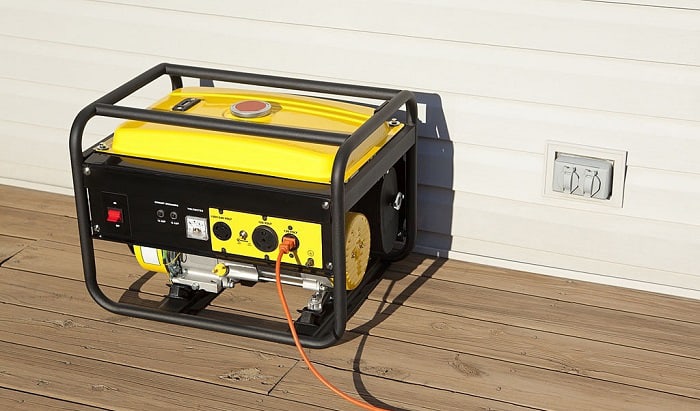
Are you here because you’re wondering, why does my generator circuit breaker keep tripping? In a majority of tripping cases involving a generator’s breaker, people predominantly end up discovering they’re only dealing with an electrical overload or a power leak/ ground fault.
Secondly, a faulty breaker may be to blame. Lastly, don’t overlook the possibility that there may be something wrong with its circuitry, particularly a loose connection. Read on to learn why these issues happen and the best steps you should take to address them.
Table of Contents
Why Overloads and Short Circuits Commonly Plague Generator Breakers
Don’t forget about the gfci side of things, too, frequent tripping has always been a tell-tale sign of a bad breaker, are faulty wires and loose connections possible culprits.
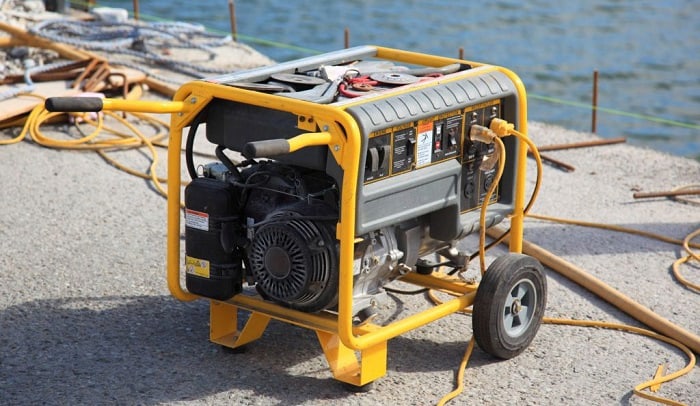
Every generator and its corresponding circuit breaker has a maximum load capacity. For example, your portable Generac generator breaker keeps tripping probably because you’re not entirely aware of the generator’s load capacity.
Try looking back to when the trip occurred. Did you turn on more appliances and gadgets than usual? Did you add a new appliance to the circuit? Chances are, it may be drawing more amps than you anticipated, and that’s the only reason why the generator keeps tripping the breaker.
If that’s the case, then you only need to reduce the load. Incidentally, people share this common issue because they’re not mindful of load capacities. If you rely a lot on your generator because you’re outdoors a lot (i.e. sailing or camping), you may have to closely watch out for when you’re pushing the limit from now on.
When tripping circuit breakers are concerned, GFCI breakers tend to come into play, too. After all, most generators integrate only these two types of breakers.
If your generator’s GFCI keeps tripping, it’s not usually because of an overload. It’s most likely performing the specific function it’s designed for, which is to trip when a power leak or a ground fault happens.
Think of these “leaks” as electric currents that have gone awry. They’re more inclined to follow a different circuit than the one that’s connected to the generator. GFCI breakers keep track of these electrical anomalies and will shut down the power once they do.
Is that the only reason why GFCI breakers of generators trip? Not really.
- We can’t totally rule out the possibility of an electrical overload being behind it.
- Be wary of the presence of moisture near the GFCI breaker. It may have built up to the point that it’s beginning to cause the usual “generator circuit breaker keeps tripping” problem. These are rare in portable generators, though, for they’re naturally equipped with better protection against the elements.
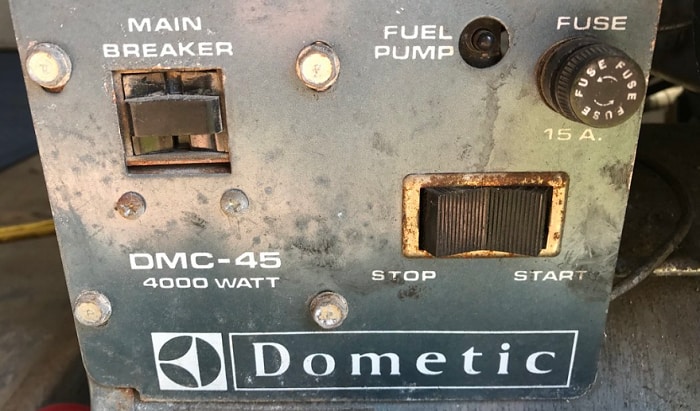
Next, we need to consider the possibility that you’re dealing with a breaker that’s on its last legs. Regardless of what power source you’re using, a breaker that needs replacing will start showing this sign. This is especially true if the generator to the breaker trips without load.
However, that’s rarely the only symptom you’ll see. The breaker itself may be short-circuiting and gets damaged in the process. You’ll see signs and odors resulting from the damage, like a smoky smell or blackened spots around the breaker.
Don’t delay replacing the breaker once you confirm that it’s no longer functioning. You won’t be able to use your generator properly and safely without it.
We can’t rule out the odds of them affecting the generator breaker. After all, there’s not much difference between a home circuit breaker and a generator circuit breaker. Although, I admit that they’re not as common as the other problems mentioned here.
However, we can’t deny that almost every breaker is designed to trip if it’s sensing there’s something wrong with its wiring. This is why I give the benefit of doubt and check the screws of setting the wires in place when diagnosing generator circuit breaker problems. A little tightening could very well solve the issue outright.
Here’s a fine demonstration of it:
So to sum up the answers to “why does my generator circuit breaker keep tripping?” I recommend you remember these pointers:
- The power draw of the appliance/s exceeds the load capacity of the breaker so
- Electrical leakages and ground faults will keep tripping the GFCI breaker until you address the issue of moisture or faulty wiring.
- Breakers that are about to go tend to trip a lot.
- Don’t overlook loose connections.

I am Edwin Jones, in charge of designing content for Galvinpower. I aspire to use my experiences in marketing to create reliable and necessary information to help our readers. It has been fun to work with Andrew and apply his incredible knowledge to our content.

- Search forums
- Active Forums
- General Electrical Forum
breaker trips when transferring power to generator
- Thread starter Doug Sieckert
- Start date Aug 4, 2021

Doug Sieckert
- Aug 4, 2021
I perform a monthly generator test at community hospital. I have 6 transfer switches, I rotate starting the generator with a different one each month. My question is we have a new CATH lab with a 150a square D breaker (No adjustments on the breaker) that feeds the UPS which supplies power to the CATH lab OR. This breaker is NOT on emergency power. Why would transferring the power to the generator cause the 150a breaker to trip? I have asked 2 electrical engineers and they have no idea.
EC, Westchester, New York NEC: 2014
Probably a question you need to ask the UPS manufacturer. -Hal
First Chief Moderator
Is the generatorTS 3 or 4 pole? Does the Sq D have GFP? How large is the ups? Do you hate monitoring software for the UPS? I agree with Hbiss, it’s likely your ups, perhaps an in rush on startup.
- Aug 5, 2021
Many power supplies (including UPS) convert to DC via rectifiers on the AC input. If the rectifiers connect more or less directly to the capacitor bank there can be a very large inrush when the DC bus is at a low voltage. To prevent this they may use an inrush control circuit which inserts a resistance, slowly charging the bus and then switching it out of the circuit for normal operation. This may be a thermistor instead of a relay controlled resistance. But if the transfer process takes long enough for the DC bus to drop significantly but not to reset the inrush control there can be a large surge when the generator picks up the load. If there were directly driven motor loads, the first suggestion would be motor inrush due to phase mismatch when the transfer switch operates, but that is not applicable to the OP's situation. Does the UPS switch the AC sources or is it the dual conversion design that always drives the load from the inverter? Never mind, the OP says that the UPS is not powered from the generator, so none of the above applies. Very strange.
hbiss said: Probably a question you need to ask the UPS manufacturer. -Hal Click to expand...
Senior Member
Doug Sieckert said: I perform a monthly generator test at community hospital. I have 6 transfer switches, I rotate starting the generator with a different one each month. ... Click to expand...
I would venture a guess someone has paralleled some circuits with another panel somewhere in a jbox. Happens more than you would think.
hillbilly1 said: I would venture a guess someone has paralleled some circuits with another panel somewhere in a jbox. Happens more than you would think. Click to expand...
synchro said: Does the breaker trip no matter which transfer switch is activated, or is there one or more of them that don't cause a trip? Click to expand...
The circuit tracer I have is great for finding paralleled circuits, it draws current off the circuit to work, and when two different panels are tied together, whether it’s the hots or neutral, it splits the signal, and the tracer will indicate it with a weaker signal showing up in both panels. Usually I can narrow it down to which circuits it is, unless it’s multiple circuits.
Can you post a pic of the front of the 150A breaker or provide the complete cat or model #? Since it is a fairly new installation and if the instantaneous trip units are adjustable, it's possible that the settings were lowered by the testing/ startup tech for easy testing. If the tech forgot to adjust the settings to max after testing then that could cause the nuisance tripping.
ATSman said: Can you post a pic of the front of the 150A breaker or provide the complete cat or model #? Since it is a fairly new installation and if the instantaneous trip units are adjustable, it's possible that the settings were lowered by the testing/ startup tech for easy testing. If the tech forgot to adjust the settings to max after testing then that could cause the nuisance tripping. Click to expand...
Power System Engineer
If there is a transformer in between the ATS and UPS, one possibility is transformer inrush with an inadequate instantaneous setting.
Xptpcrewx said: If there is a transformer in between the ATS and UPS, one possibility is transformer inrush with an inadequate instantaneous setting. Click to expand...
GoldDigger said: But the UPS breaker is not on a generator-backed circuit according to the OP. Click to expand...
Sounds like a one-line drawing would be useful here; I'm also confused about what powers what and what trips. (What?)
Xptpcrewx said: I might be missing something... Where does the OP say that? Click to expand...
hillbilly1 said: “This breaker is NOT on emergency power.” From post #1 Click to expand...
Xptpcrewx said: Since when is emergency power = generator power? Click to expand...
Terminator5047
You should check the settings on the ats to how close to phases lining up before making the switch the farther out the phase angle the more inrush. Does it trip on the switch from normal to emergency or from emergency to normal. I’ve also seen new roof top units on the switch go to a reset cycle and it had 4 compressors in it that would all be calling for cooling in the hot summer and all them would come on at once causing massive inrush tripping the breaker. So to solve that I tightened up the phase angle and then I took a 2 wire from the ats elevator recall contacts to the plc In the hvac unit and had the Trane guy write a program saying hey we are testing and to stage the compressors back on one at a time vs all at once.

IMAGES
VIDEO
COMMENTS
Checking the GFCI Receptacle. In order to check whether the GFCI receptacle is causing the trip or not, you will have to turn off the generator and disconnect all the devices from your generator. After doing so, you have to restart the generator and reset the GFCI receptacle. This is done by simply pressing the "Reset" button.
HOW TO AVOID TRIPPING A BONDED NEUTRAL GENERATOR. The experts at Electric Generators Direct explain how to keep your generator from tripping a breaker when plugged into a transfer switch. We explain the safest solution. Don't disconnect a bonded neutral generator because it's dangerous and isn't recommended by the manufacturer or OSHA regulators.
Start by unplugging the appliance and reset the breaker. If the generator doesn't trip, the appliance is faulty and might have an internal electric short. If the generator still trips, shut it down and remove the breaker connected to the line with the electrical short. Check for continuity using the multimeter.
Only use the GFI transfer switch if your generator is entirely GFCI secure. The 120/240V vents are GFCI secure, and it may trip your circuit or form a ground loop if you do not use a GFI switch. How to know if your generator GFCI has a bonded-neutral . There are several ways of knowing whether your generator is GFCI secure.
Here are a few things you can do to fix your tripping breaker: Identify which breaker is tripping - If your generator has both standard circuit breakers and GFCI's, the first thing you need to do is find out which one is tripping to help you narrow down the possible issues. Disconnect non-essential appliances during blackouts ...
When utilizing these bonded neutral generators, which also have full panel GFCI protection, to power a house or building through a transfer switch, a switch neutral kit can be employed for 30-amp transfer switches and generators. If a switch neutral kit is unavailable or if the generator has a 50-amp receptacle, such as the XP10000E, an ...
A GENERATOR CAN TRIP. Sometimes frustration will set in because a generator starts tripping, meaning it shuts down. Just like your home's electrical system, a generator is protected by one or more circuit breakers. These will switch the generator off whenever an electrical overload or surge is detected.
The circuit breaker for the generator can also trip due to faulty cables and loose connections. It can still happen, even though it is less frequent than other problems. The breaker can detect a problem with the wiring and trip to stop further harm or danger. The same problem can also be brought on by loose connections, which can prevent the ...
See if the Tripped Electrical panel switches- are off. 1. Testing the GFCI Outlets. In order to test whether the GFCI outlets are responsible for the generator to trip or not Follow the steps below: Step 1: Switch off the generator. Unplug all the household appliances from the generator, Disconnect all items that are not important from your ...
Step 1: Turn-off & Reset. Turn the generator off. Disconnect the generator's cords and any connected devices. Afterward, restart the generator. Then reset the GFCI. First, disconnect any appliances connected into the same circuit as the GFCI. To reset the GFCI outlet, check the two little buttons on the front.
When the utility power returns in the main panel but the transfer switch is providing power from the generator, the GFCI circuit breaker in the main panel will trip. In addition, the kitchen circuit is not GFCI protected while running on generator power, which is not acceptable. Option 1: Install a GFCI breaker also in the transfer switch (if ...
WINCO offers the Reliance XR series manual transfer switches. The Reliance XR series are three pole manual transfer switches. By switching the neutral these manual transfer switches meet the NEC code allowing direct connection of bonded neutral generators and are compatible with GFCI protected switches. XRK0603D.
Generator gfci breaker tripping on transfer. The transfer switch is a 3 contact switch (switchs neutral). The transfer switch acts like a 50 amp sub panel. 50 amp breaker in home panel, 30amp receptacle outside for generator, 8 breakers in the panel, neutral bar for the 8 breakers being used in the panel. Testing confirms that there is no ohm ...
Portable Generator Parts Specialists stocking 780,000+ maintenance grade parts for over 1000 brands of portable electricity generators. Free online interactive Repair Guides and help from our Generator Engineers. We hold stock so you can fix it fast. Warehouses and Repair Centers in US, Canada, UK, Europe, Australia. Trading since 2007.
Depress the reset button. Wait to see if the button remains depressed and the generator continues to run. Plug a lamp with a single bulb directly into one of the GFCI outlets. Replace the lamp and plug in an item with a different small load if the generator continues to run for at least 15 seconds.
A transfer switch allows you to power any of those items—while skipping the extension cords. While a transfer switch boasts both safety and convenience, it comes at a cost. Budget between $500 ...
Connect the generator cord to the transfer switch or inlet box. Start the generator and let it warm up. Flip the main breakers in the transfer switch to the Generator position. Turn on the circuits you wish to power, one at a time. This will help to prevent the generator from being overloaded. When the power is restored:
30-Amp 7500 Rated Watt Transfer Switch Kit Manual Transfer Switch. Generac. 100-Amp 16-Circuit Load Center 120/240 Volt NEMA 3R Automatic Transfer Switch. Generac. 30-Amp manual transfer switch Manual Transfer Switch. Westinghouse. 20-Amp 120V 25' Cord, Portable Reliable Home Backup Smart Automatic Transfer Switch.
In a majority of tripping cases involving a generator's breaker, people predominantly end up discovering they're only dealing with an electrical overload or a power leak/ ground fault. Secondly, a faulty breaker may be to blame. Lastly, don't overlook the possibility that there may be something wrong with its circuitry, particularly a ...
Portable Generator Parts Specialists stocking 780,000+ maintenance grade parts for over 1000 brands of portable electricity generators. Free online interactive Repair Guides and help from our Generator Engineers. We hold stock so you can fix it fast. Warehouses and Repair Centers in US, Canada, UK, Europe, Australia. Trading since 2007.
4. Guru comes through. Posted by William Atkins on 2nd Jun 2015. My generator refused to start due to a failed cut off switch. replacement was obtained and promptly delivered, generator back working happily. 5. trip switch. Posted by Mr. P.W.Mason on 21st Sep 2014.
I perform a monthly generator test at community hospital. I have 6 transfer switches, I rotate starting the generator with a different one each month. My question is we have a new CATH lab with a 150a square D breaker (No adjustments on the breaker) that feeds the UPS which supplies power to the CATH lab OR. This breaker is NOT on emergency power.
Norwall's Low Price. $5,679.00. Compare View Details. 1. 2. Next. Norwall PowerSystems - Auto Transfer Switches 480V Three Phase.